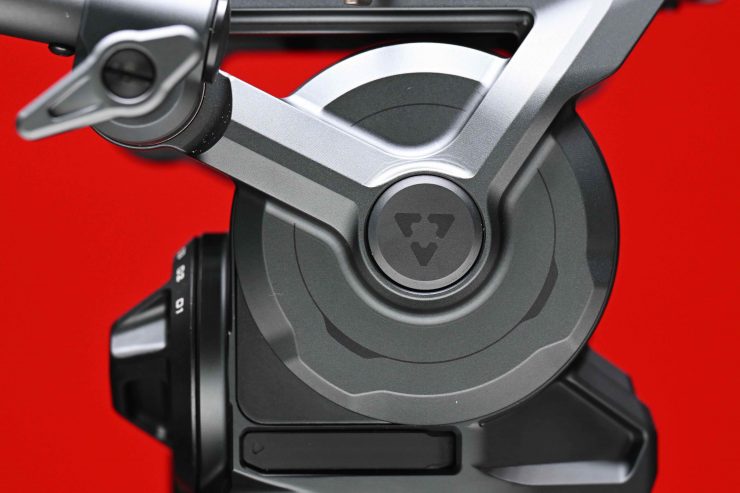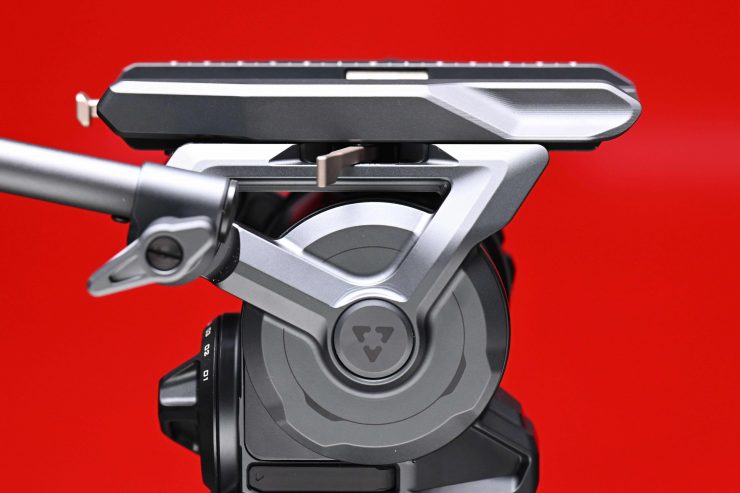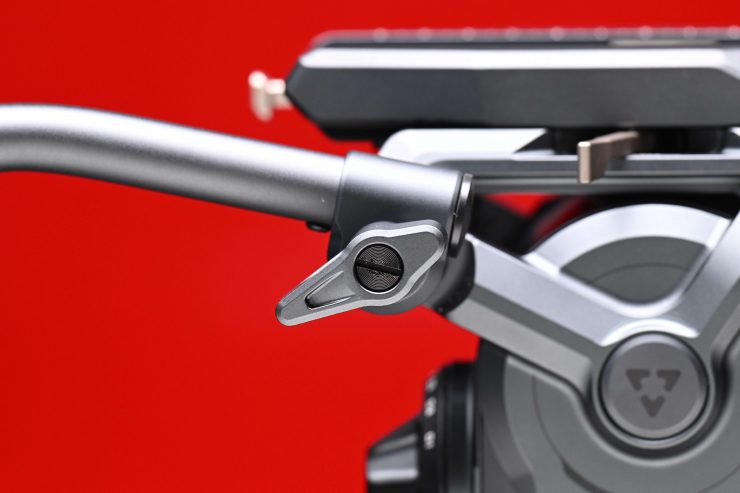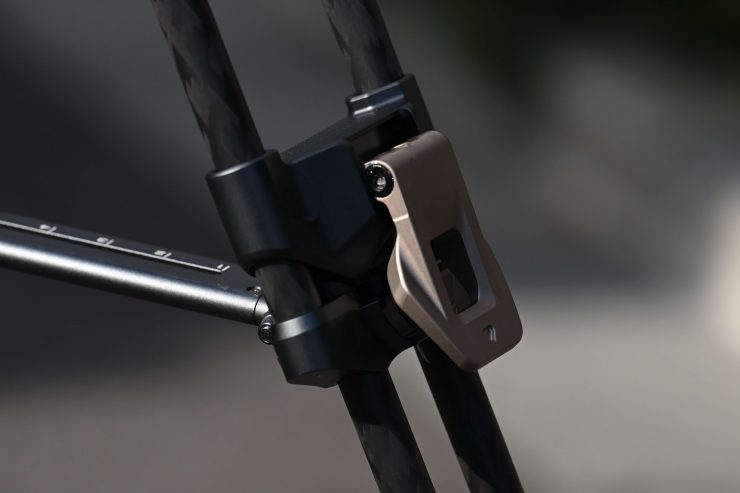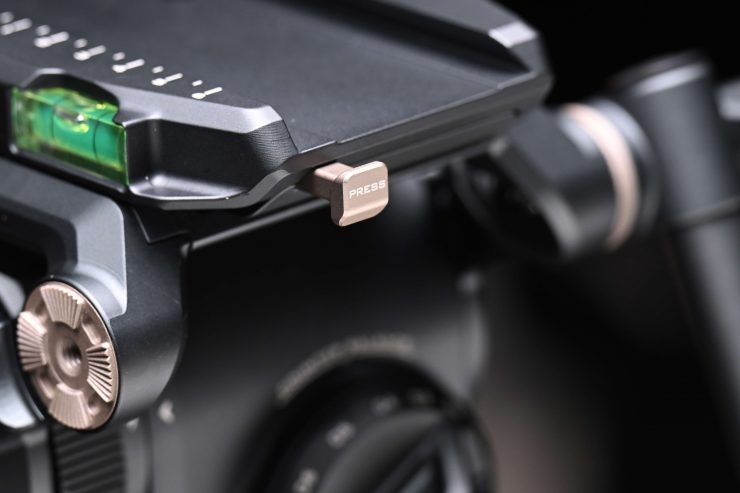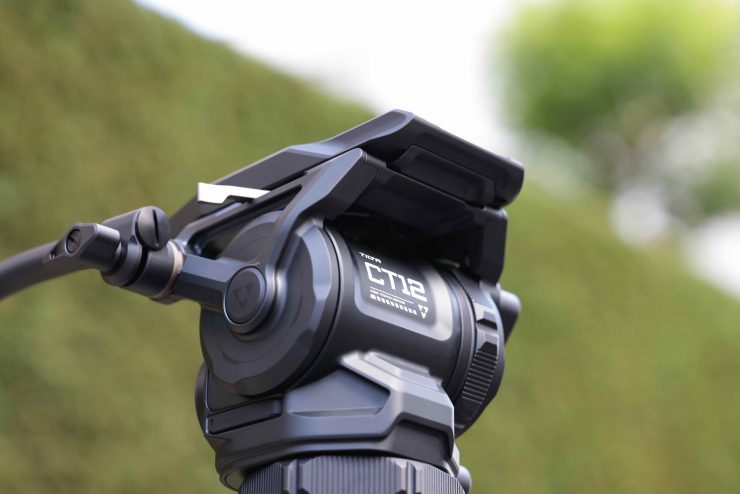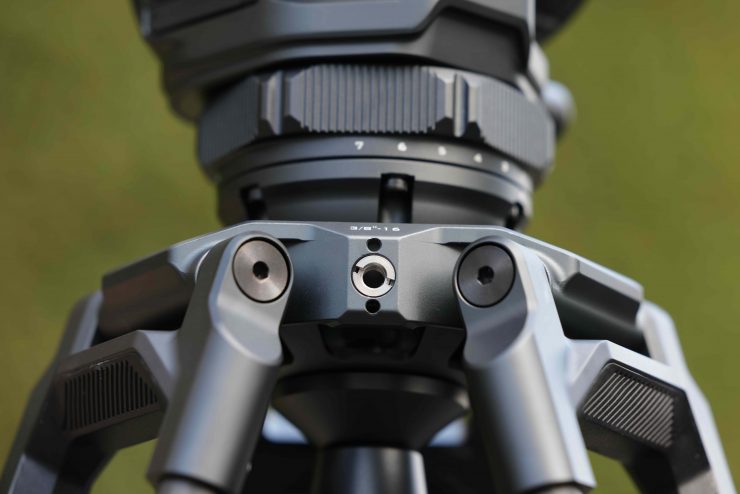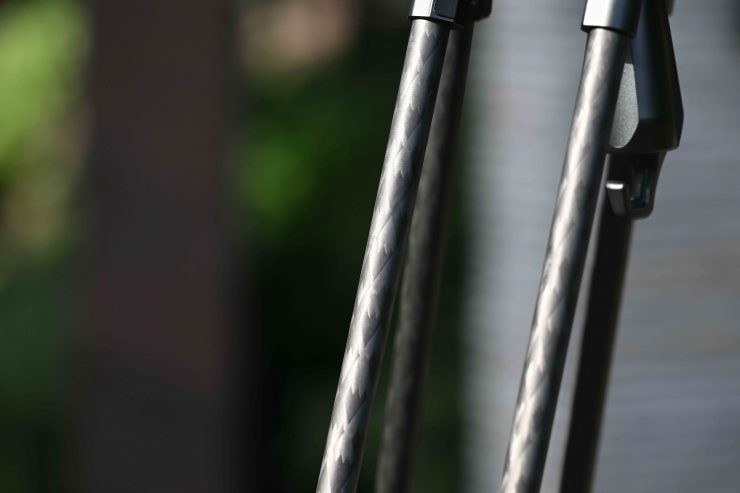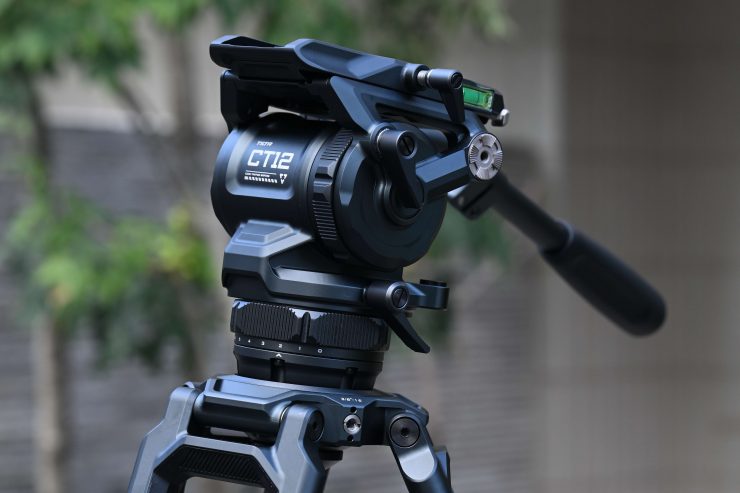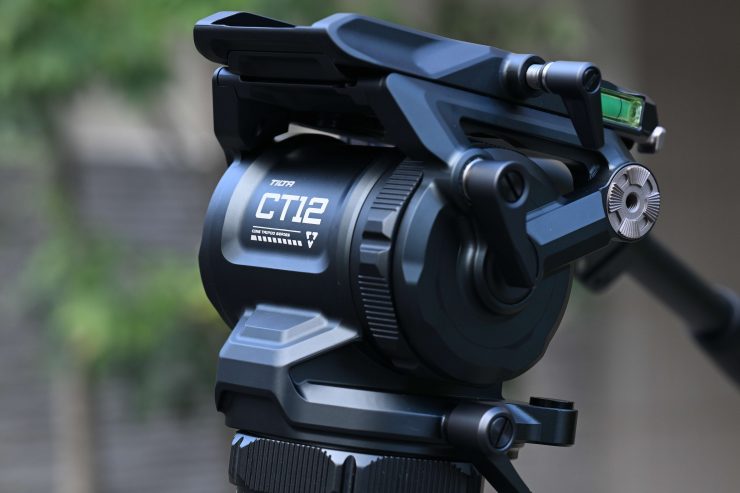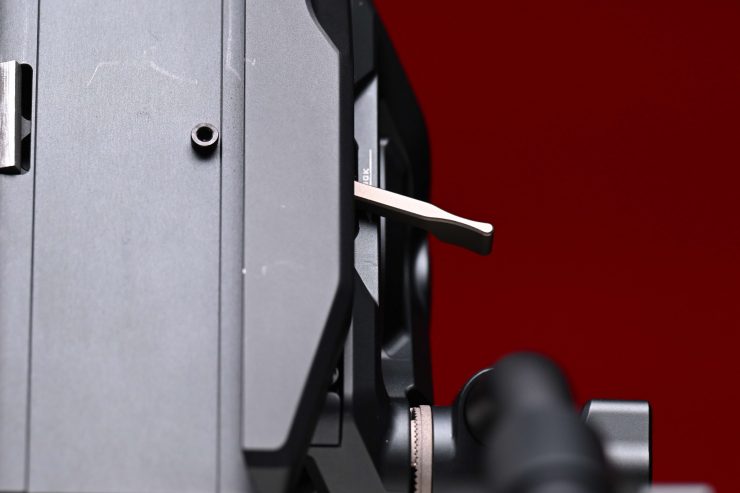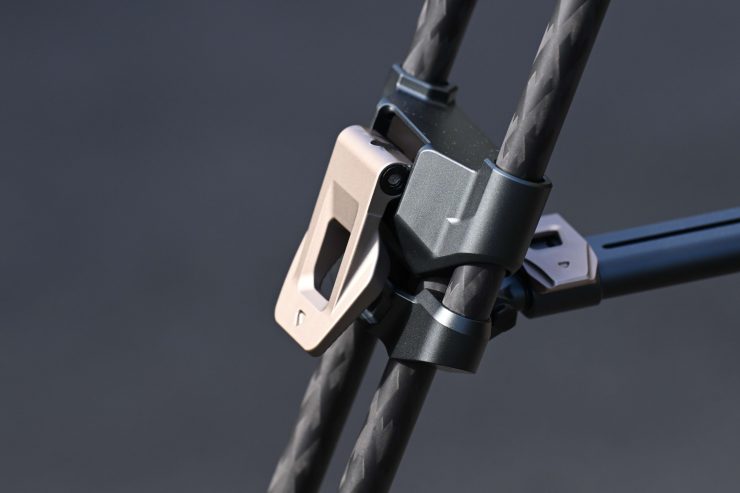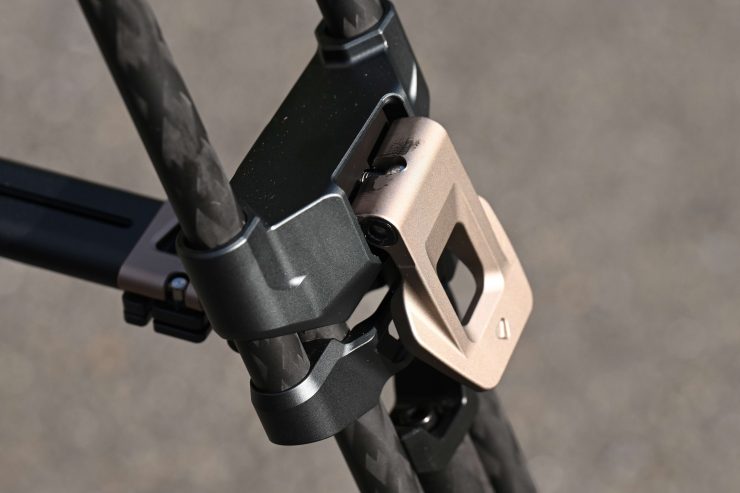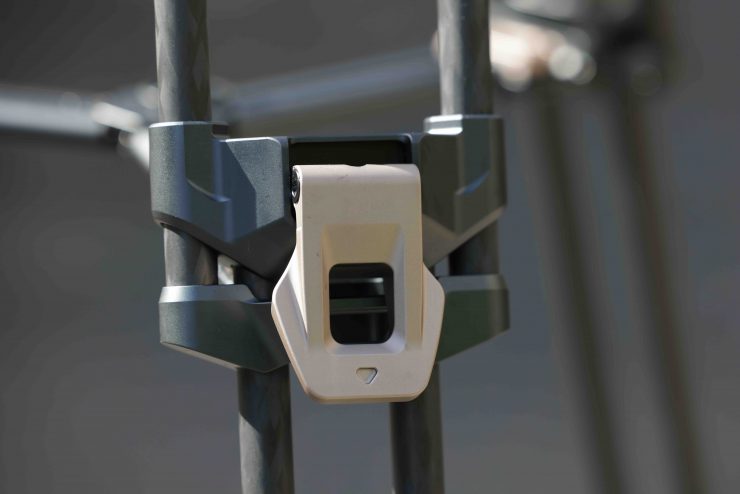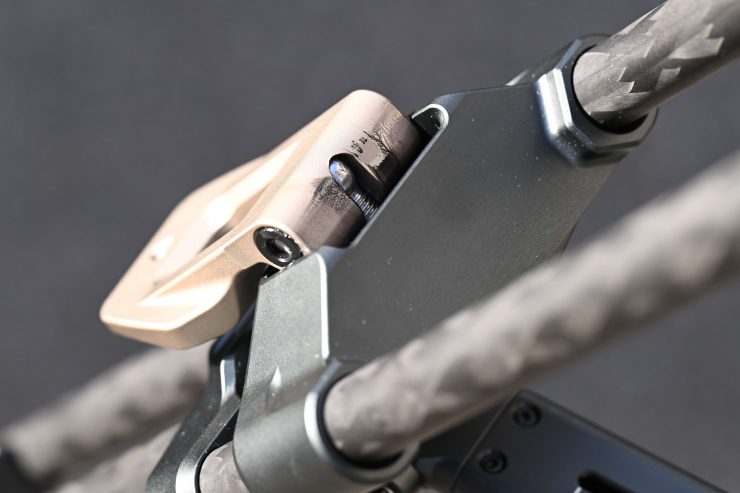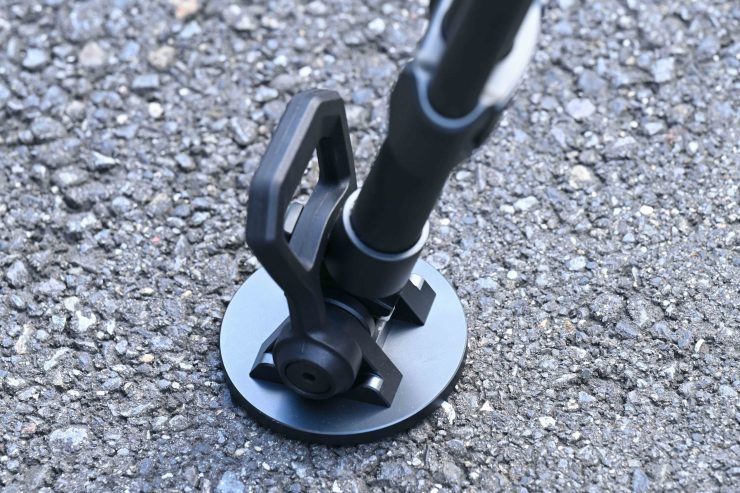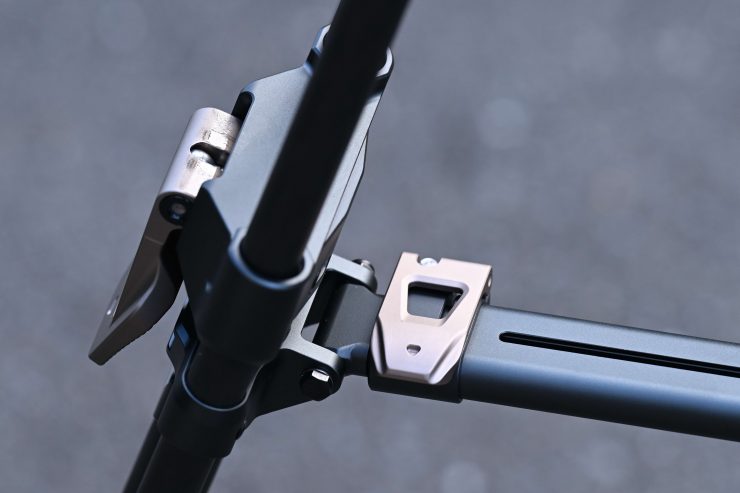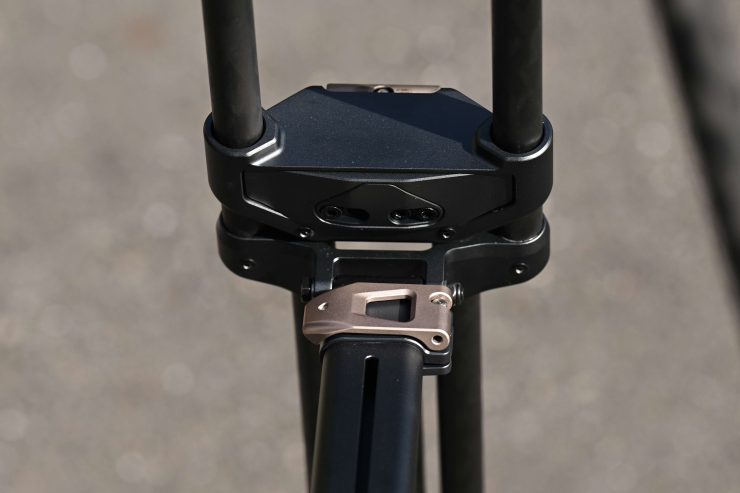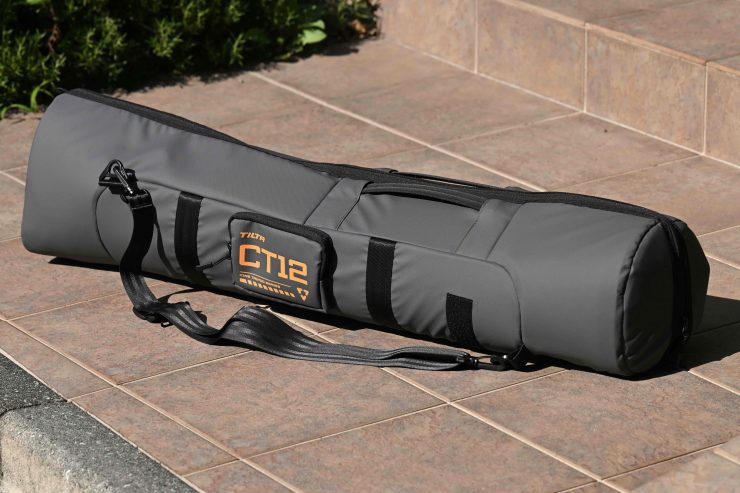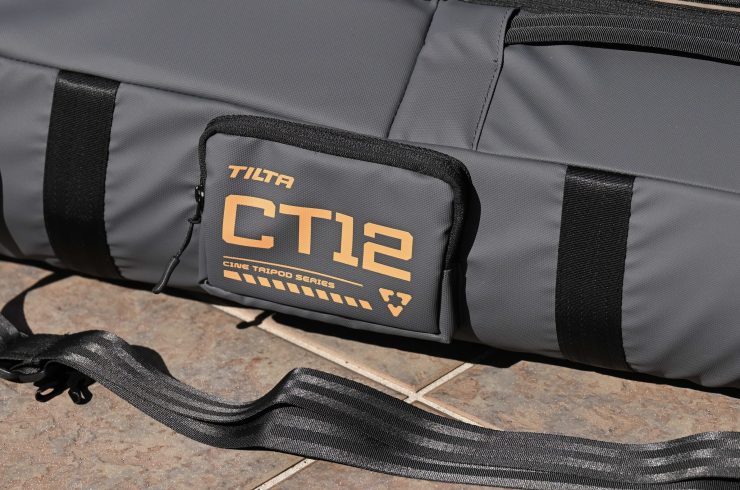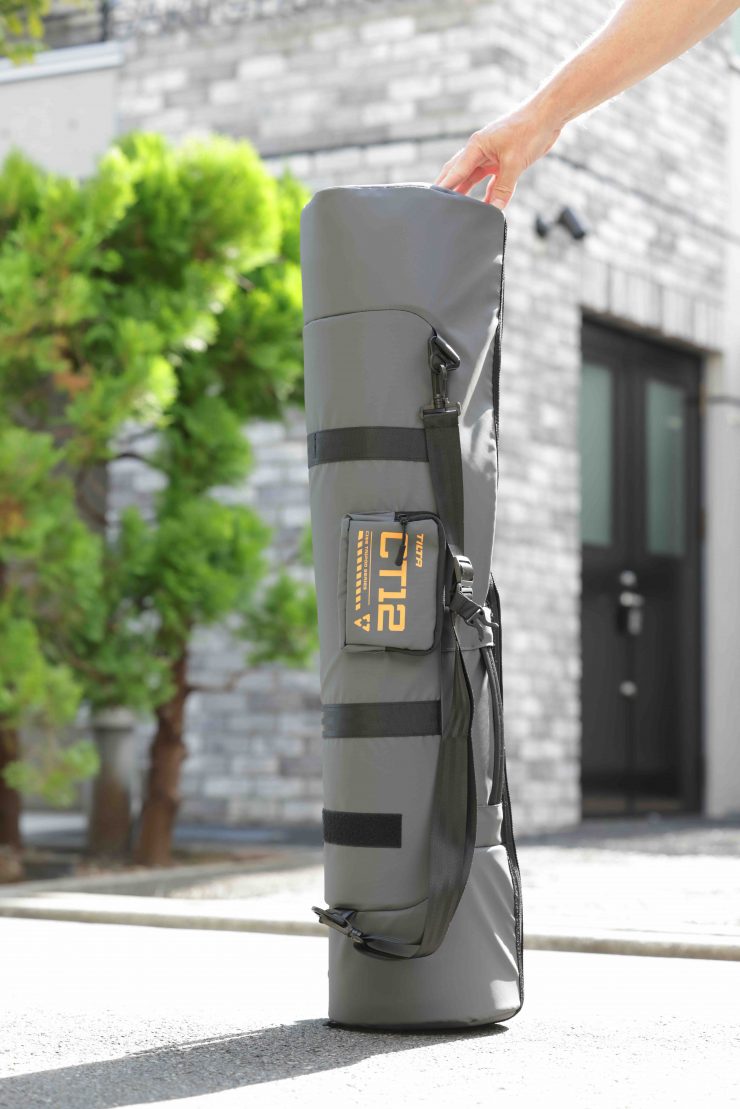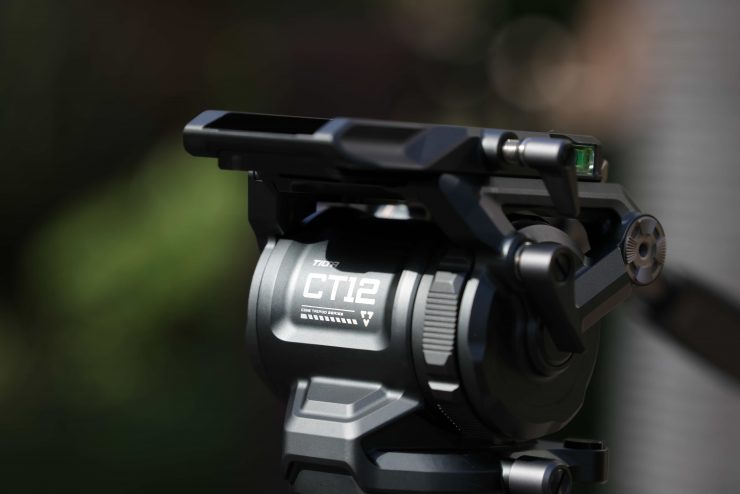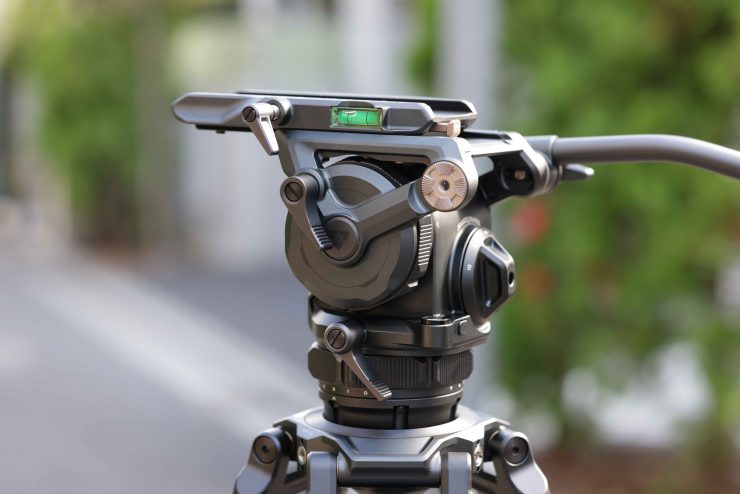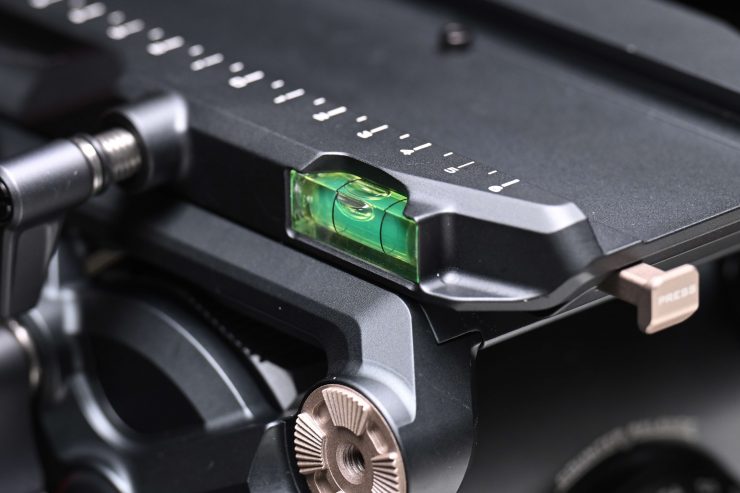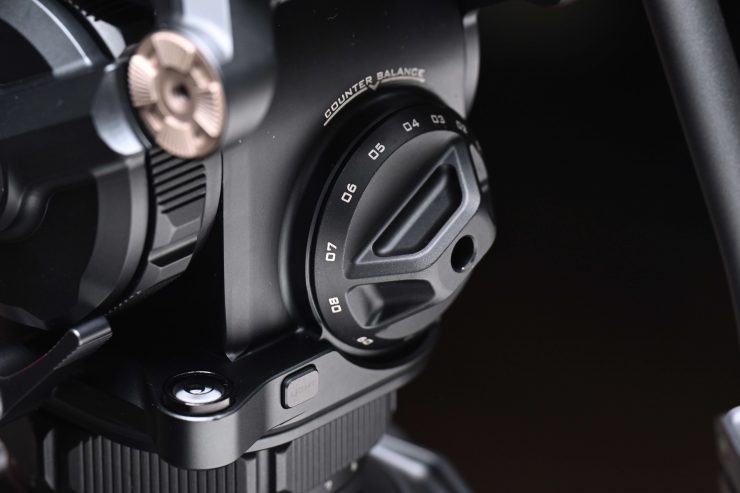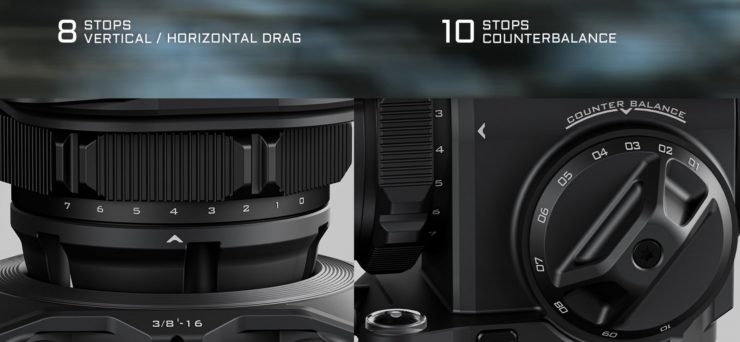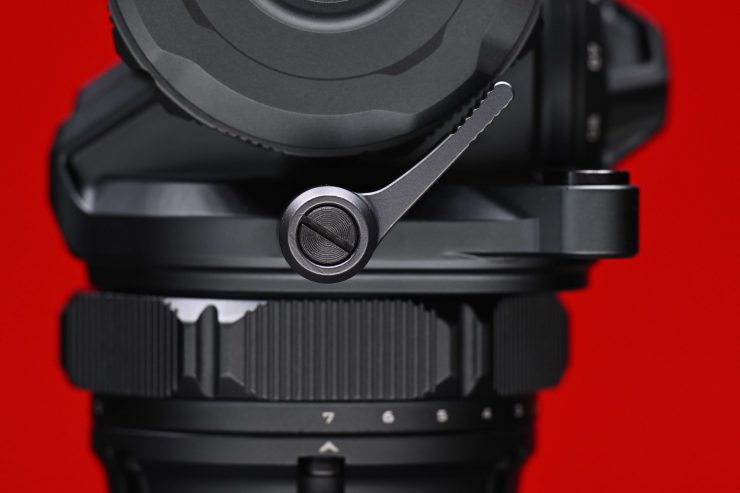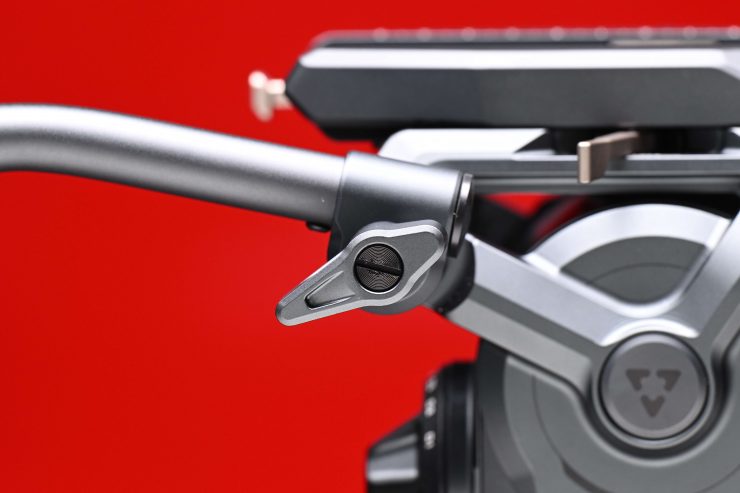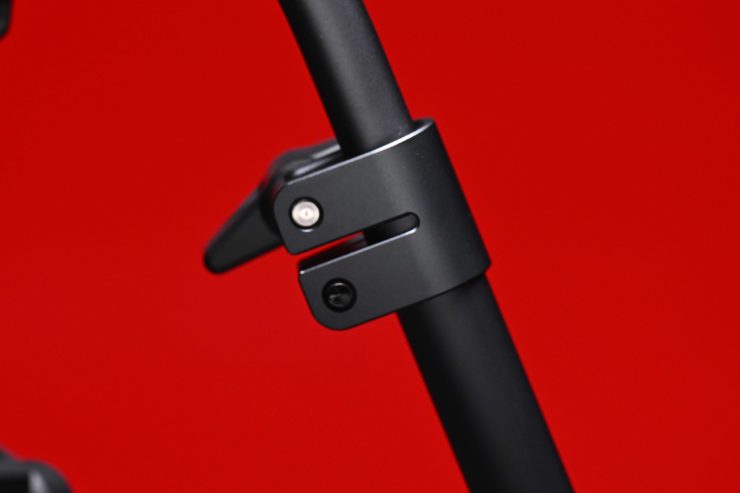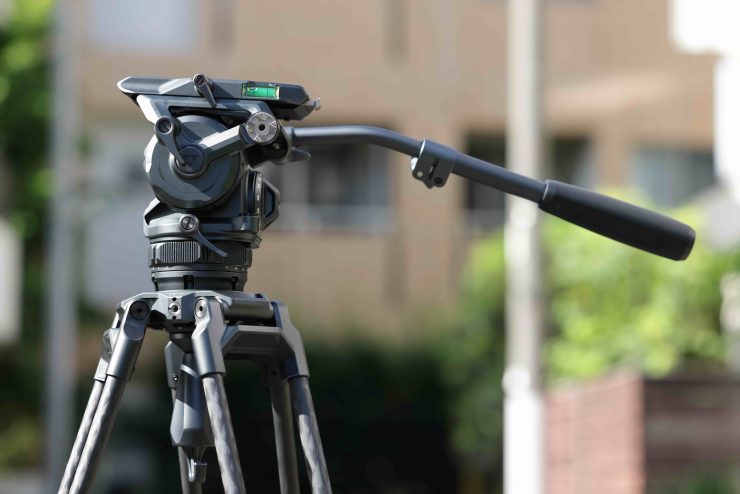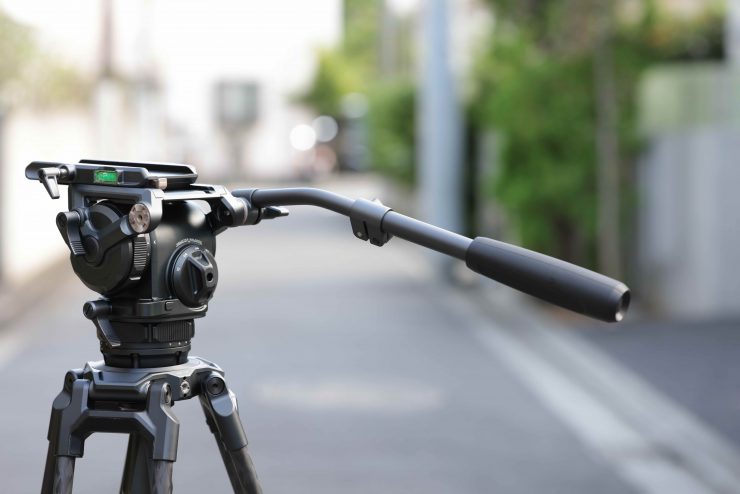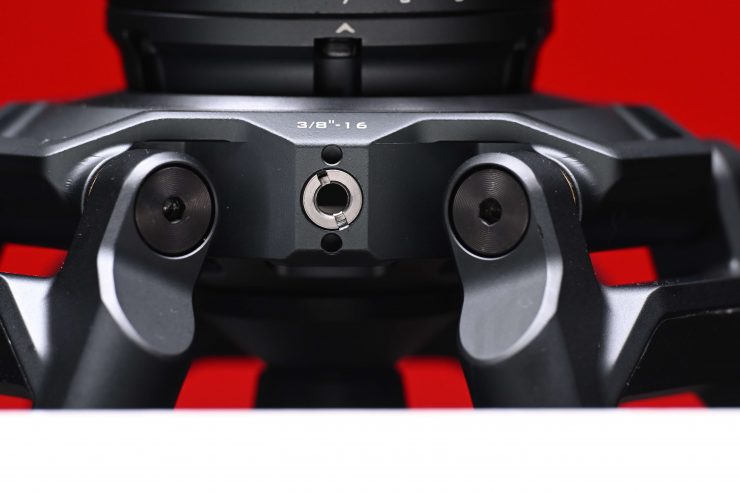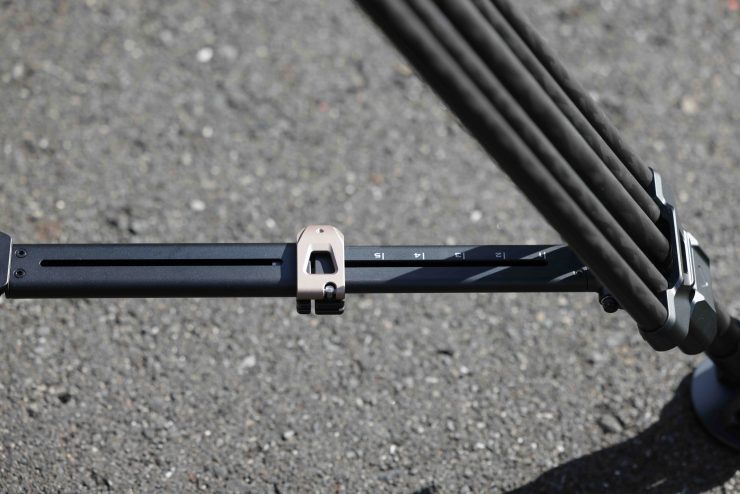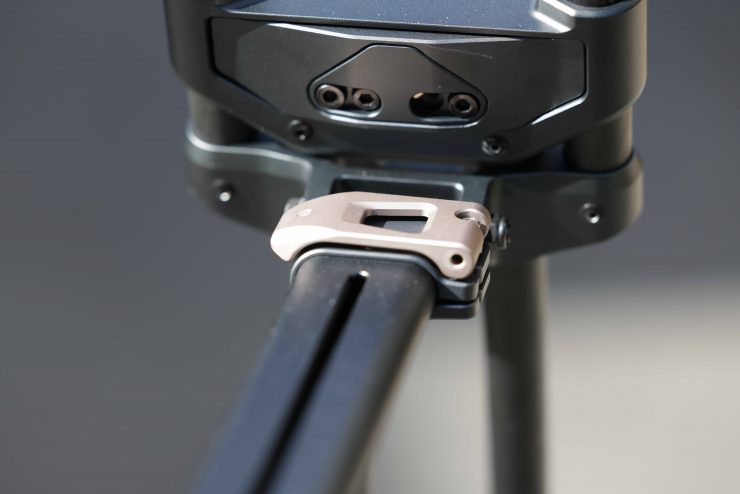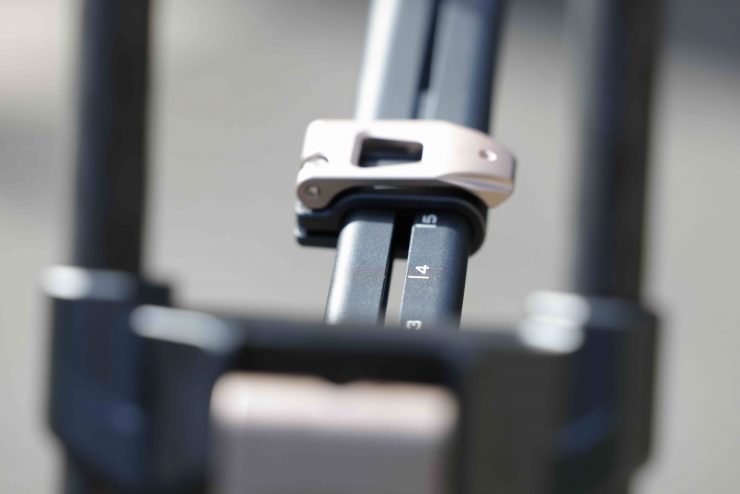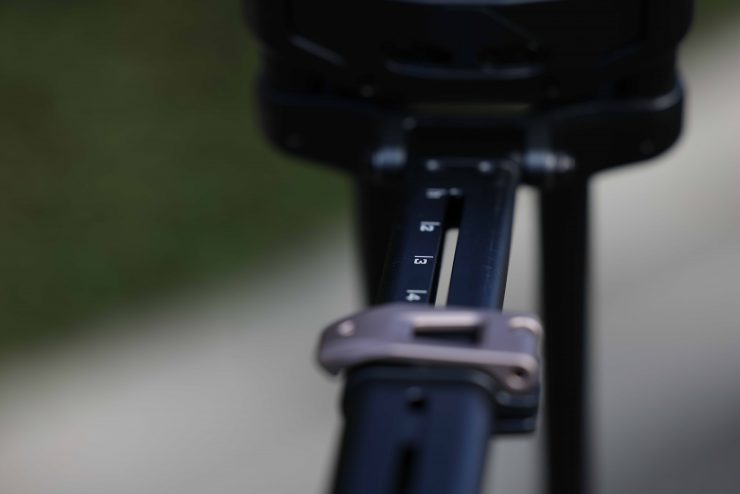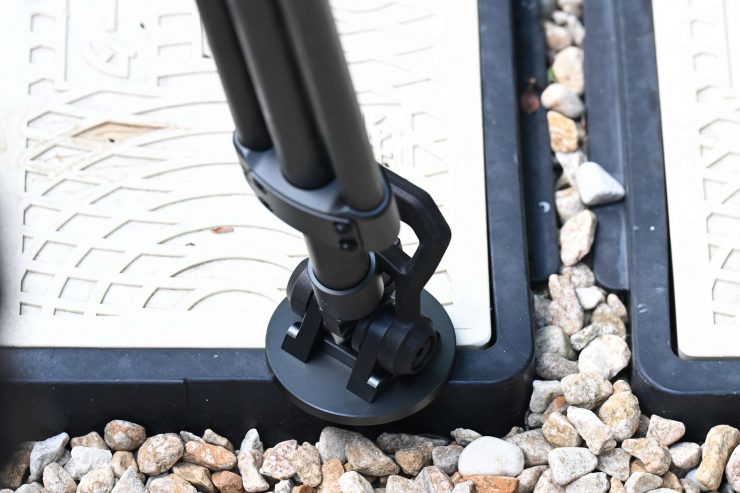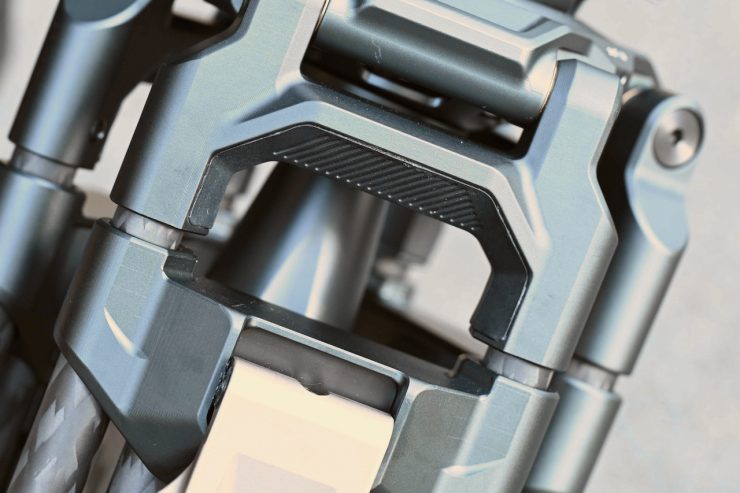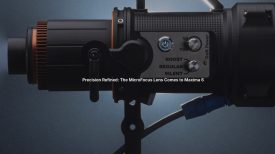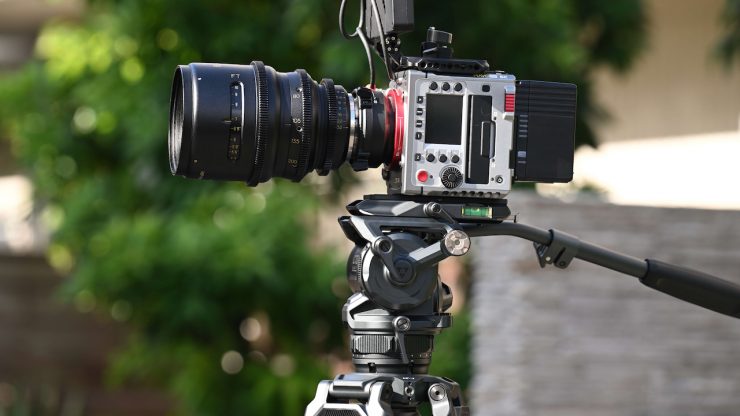
Tilta introduced the CT12 75mm Cine Fluid Head With 2-Stage One-Touch Carbon Fiber Tripod back in April, along with the CT08.
There are so many affordable tripods on the market and that makes picking one a difficult proposition. Usually, at least in my experience, you pay for what you get when it comes to tripods. Tripods should be viewed as a long-term investment because they will easily outlive any camera system you own. In saying that, I do realize that not everyone has the budget for an expensive system from companies such as Sachtler or Miller.
I am going to review this product in the same way I review any product. It doesn’t matter how much it costs, who makes it, or where it comes from. Every product gets reviewed in the exact same independent way.
Overview
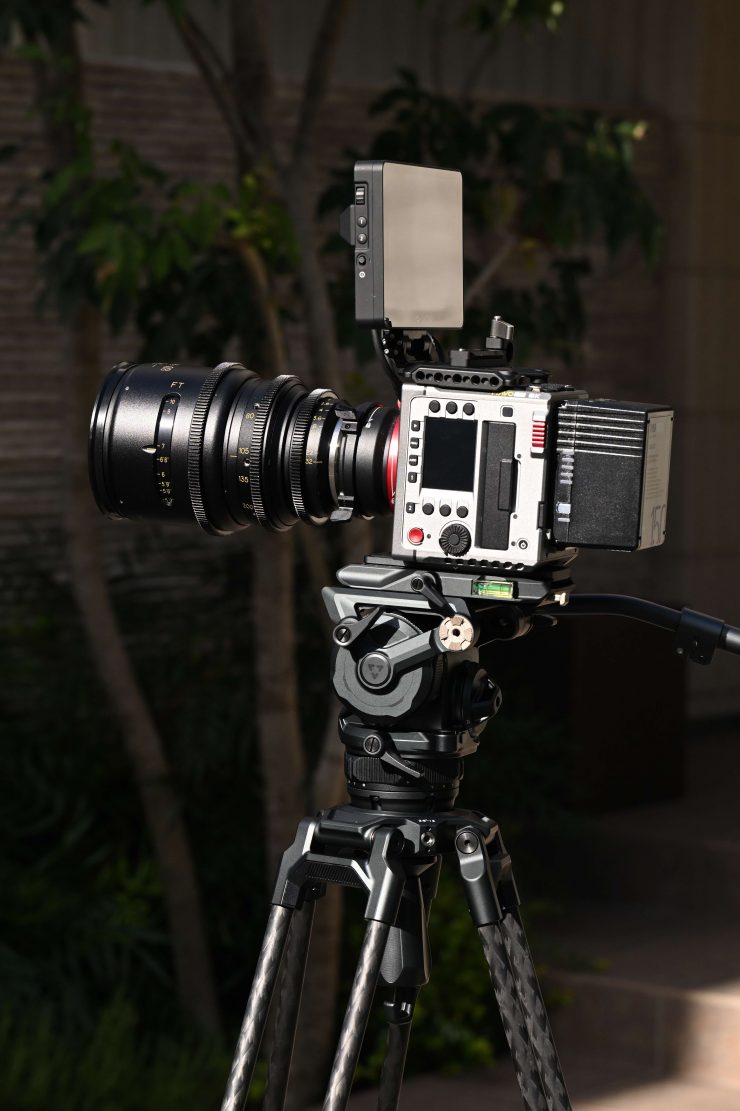
The Tilta CT12 75mm Cine Fluid Head With 2-Stage One-Touch Carbon Fiber Tripod System is being targeted as a good alternative solution to more expensive 75mm bowl fluid heads on the market. It looks to offer a good payload capacity and plenty of counterbalance steps.
Key features
- 100/75mm 2-Stage Carbon Fiber Tripod
- 75mm Cine Fluid Head
- One-Touch Lock to Extend Legs
- Counterbalanced Payload: 2.2 to 26.5 lb
- 10-Step Dynamic Counterbalance
- 8-Level Pan/Tilt Fluid Drag
- Manfrotto-Type Quick Release Plate
- 2.5 to 5.4′ Height Range
- Illuminated Bubble Level, Pan Handle
- +90/-60° Tilt, 360° Panning
Build Quality

With a lot of more affordable tripods, you probably have a preconceived notion that the build quality might be average at best. However, with increased competition in this space, a lot of the newer options are much better when it comes to being robustly constructed and manufactured.
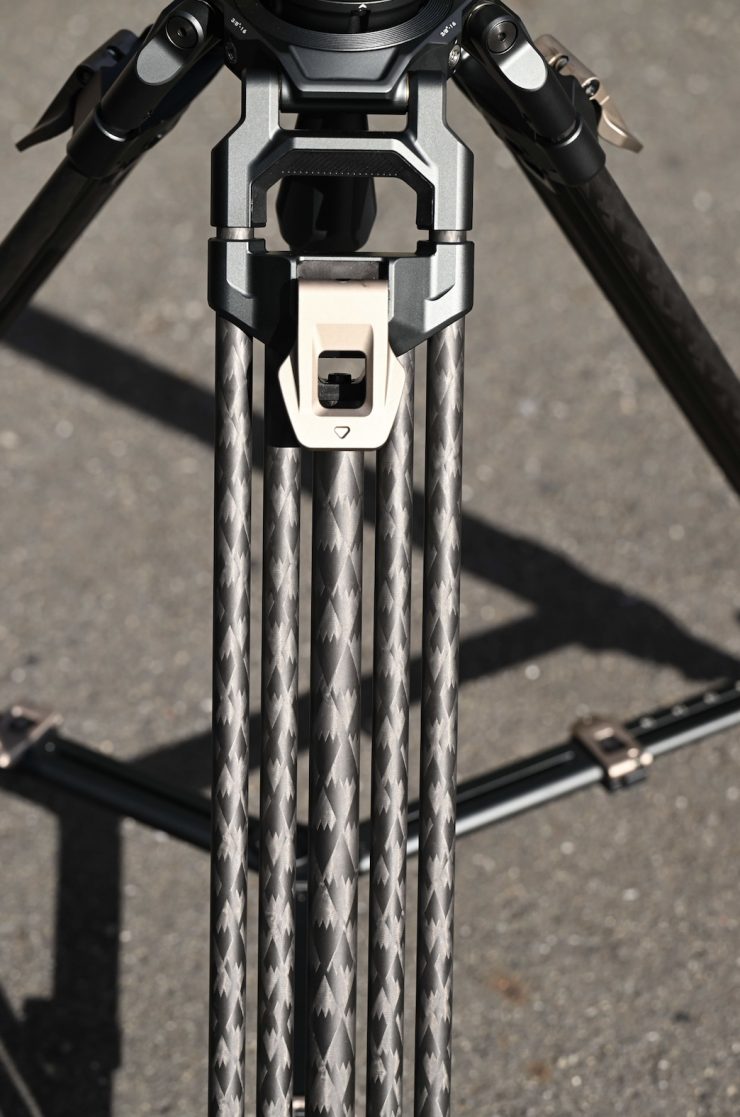
The overall build quality is good and the tripod is decently made and constructed. The tripod legs are carbon fiber.

While it isn’t going to have the same quality build quality as more expensive offerings from companies such as Sachtler and Miller, etc. I would argue that it could certainly compete head-to-head with tripods such as the Sachtler ACE XL, SmallRig AD-Pro 8 Professional Fluid Head Tripod Kit, and a lot of the offerings from Manfrotto.
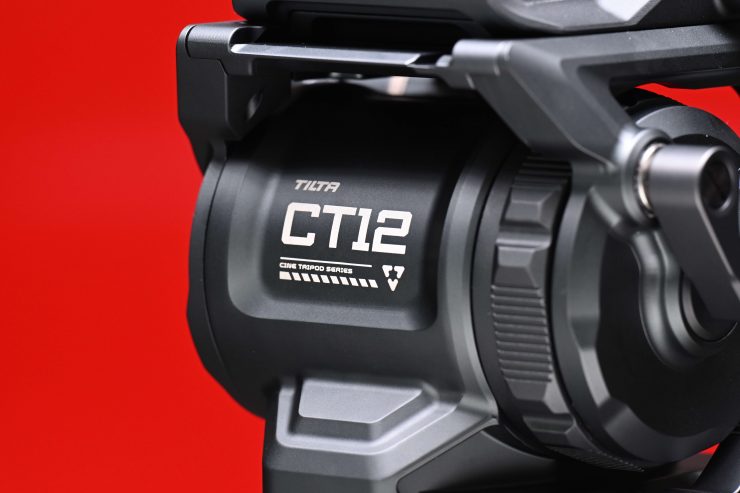
The Tilta CT12 75mm Cine Fluid Head is solidly constructed and all of the lock-off mechanisms work as they should, although there are a lot of lightweight composite materials being used.
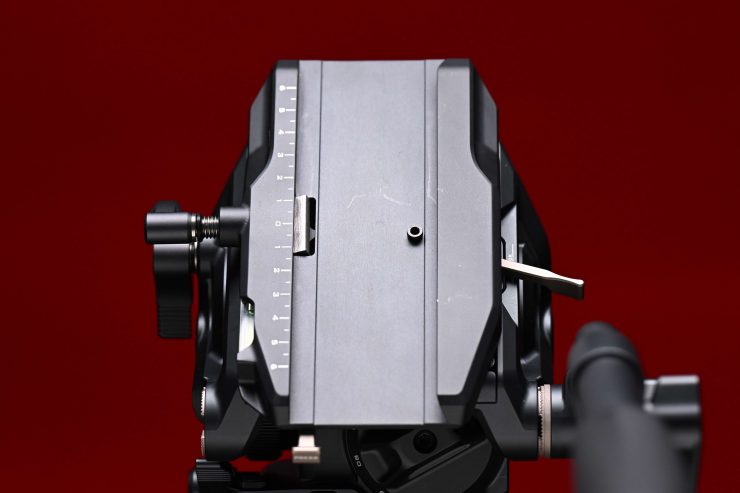
I didn’t personally like the release mechanism that allows you to adjust the horizontal balance. It is quite sharp and it hurts your finger when you unlock it. I would have preferred to have seen it made out of something else. It also sticks straight out from the tripod head which is not ideal.
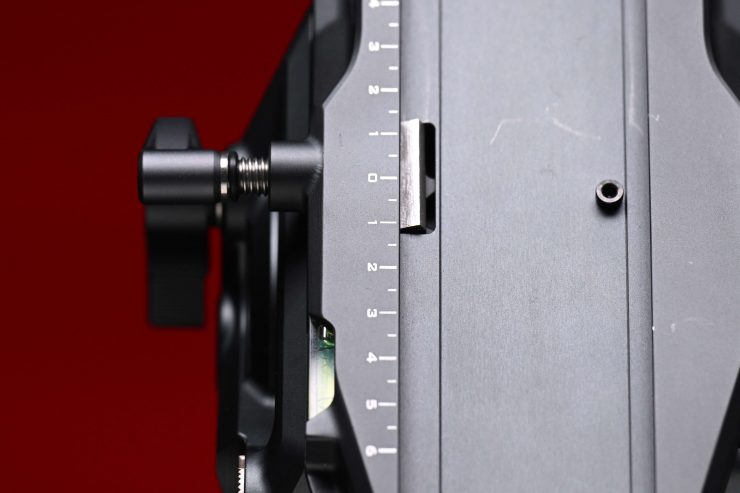
Because the material of the quick release plate and the mounting slot are exactly the same you do end up scratching the finish off. This may be a purely cosmetic thing, but it is something you should be aware of.
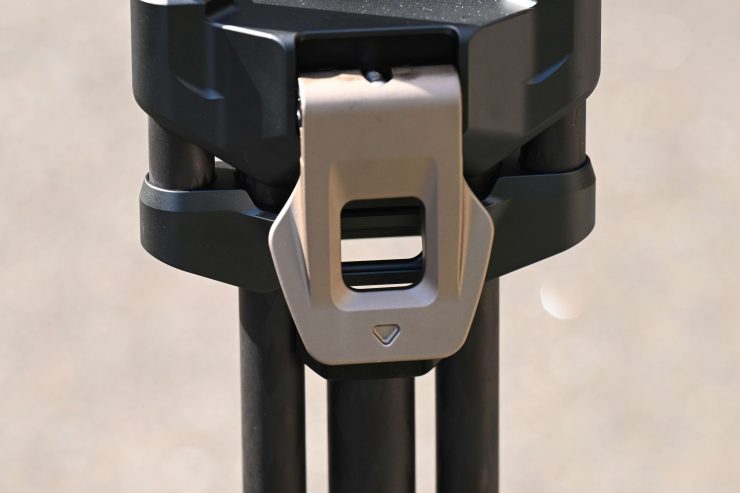
The quick-release locks on the legs are robust and sturdy and they are in a vertical position rather than a horizontal one, which I personally prefer. They do require a little bit of effort to lock and unlock, but I don’t think that’s a bad thing.
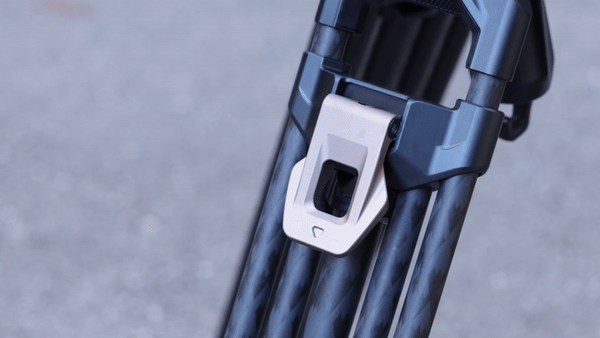
Above you can see how they work.
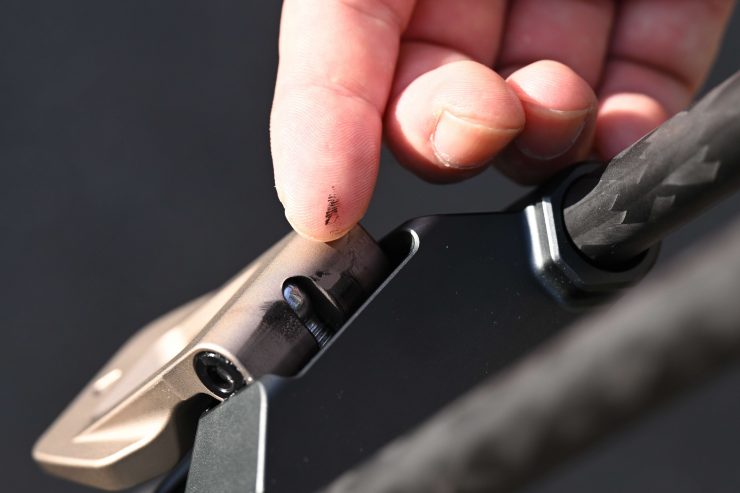
The lock-off mechanisms on the legs did have some oil or grease coming out of them. Now, I am not sure whether this was simply because it was new, but it was something that caught my eye.
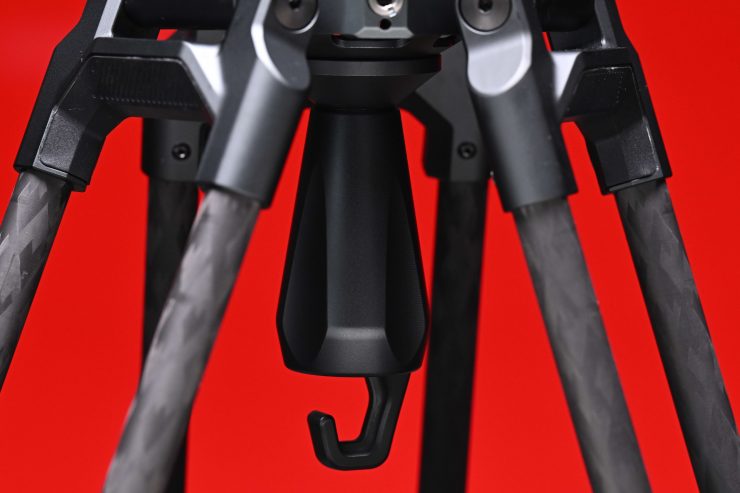
The leveling device is easy to hold and operate. There is also a hook on the end so you can hang a bag or a counterweight.
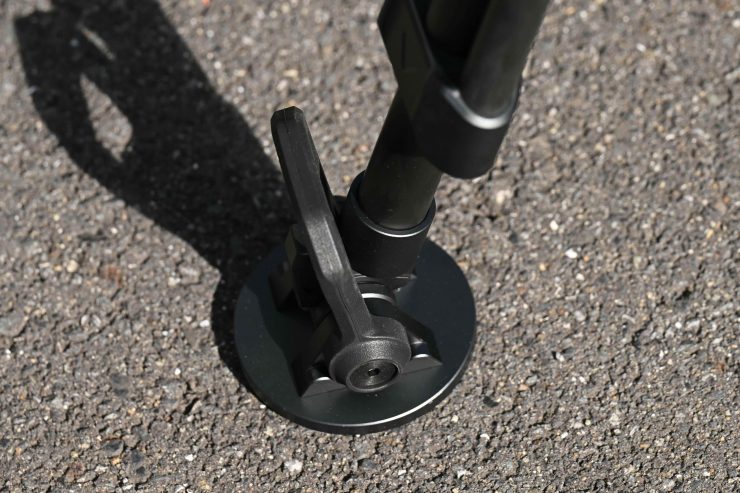
The tripod feet are nice and big and they feature a similar release system that you would find on some of the older Sachtler tripods so you can easily take them off when they aren’t needed.
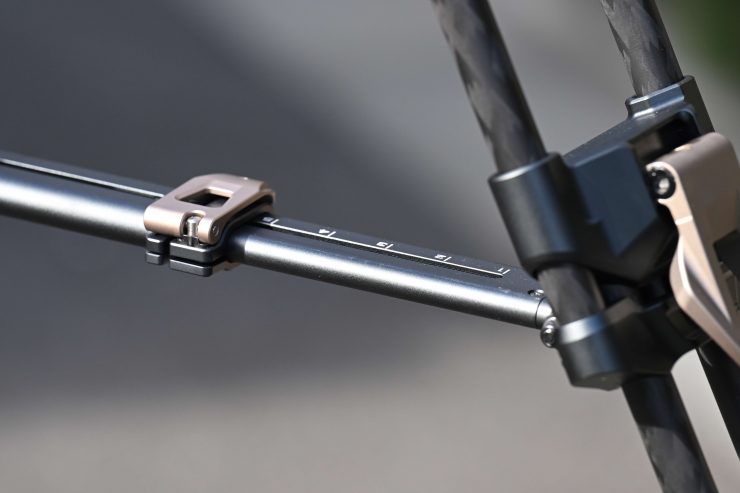
The spreaders are nice and robust and easy to adjust, however, you can’t remove the spreaders unless you use a tool.
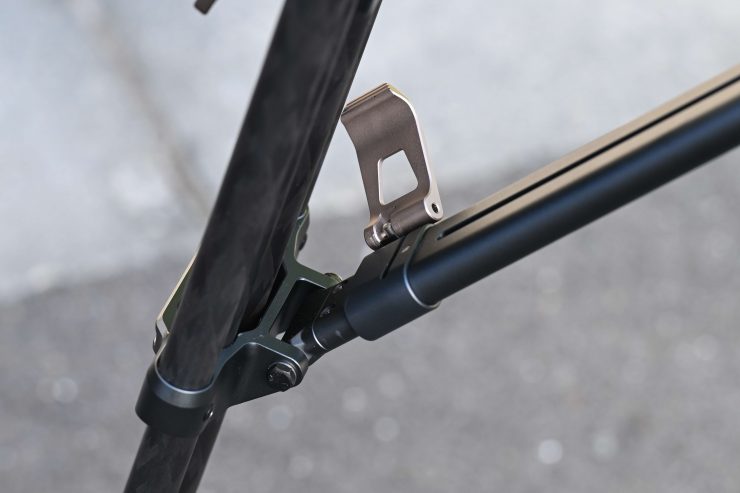
There is also an issue I found that if you don’t have them completely flat then you can’t close them up and lock down the release mechanism as it ends up hitting the legs.
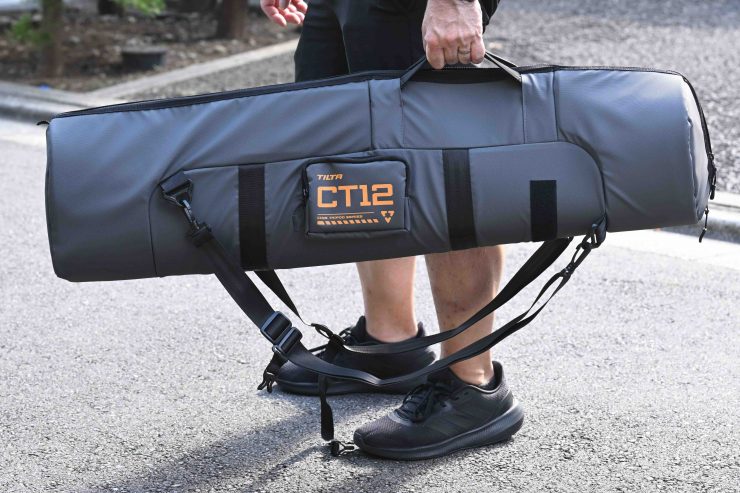
The included bag that the tripod comes in is pretty decent and a lot better than anything else I have encountered at this price range. There are included straps so you can put it on your back if need be. This isn’t exactly comfortable, but it will work.
There wasn’t anything huge that I came across that overly concerned me when it came to the overall build quality. However, it is impossible for me to say how well the tripod would hold up to life in the field over many years of use.
Tilta offers a lifetime warranty from the date of purchase on Cine Tripod
Series. This warranty covers Mainland China and the United States, more regions are coming soon.
Size & Weight
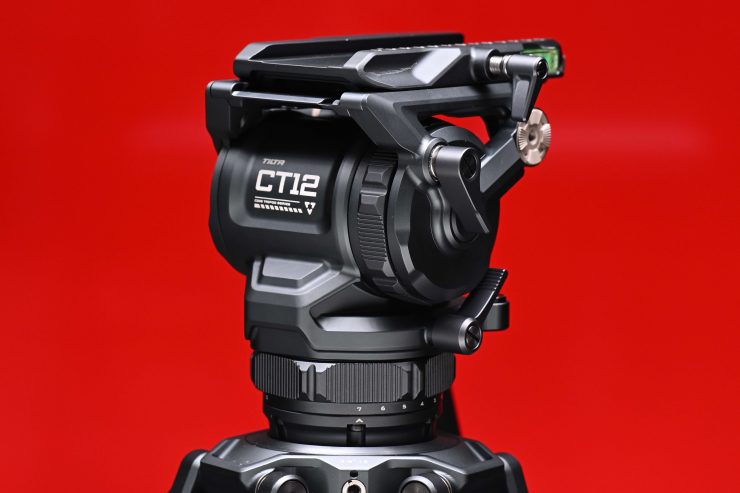
The Tilta CT12 weighs 3.3kg / 7.27 lb. This does make it quite heavy compared to the competition.
Below you can see how that weight compares to some other 75mm fluid heads on the market that I would personally consider competition:
| WEIGHT | |
| Tilta CT12 75mm Cine Fluid Head | 3.3kg / 7.27 lb |
| SmallRig Professional Fluid Head PH8 | 1.8kg / 4 lb |
| Sachtler Ace XL fluid head | 1.7 kg / 3.7 lb |
| Sachtler FSB 6 MK II Fluid Head | 2.5 kg / 5.5 lb |
| Sachtler aktiv6 Sideload Fluid Head with SpeedLevel & 3-Step Drag | 2.6 kg / 5.7 lb |
| Miller CX2 Fluid Head | 2.3 kg / 5.1 lb |
| Cartoni Focus 8 Fluid Head | 1.81 kg / 4 lb |
| Manfrotto 608 Nitrotech Fluid Head | 2.22 kg / 4.9 lb |
| iFootage Komodo K7 Fluid Head | 1.95 kg / 4.3 lb |
| Camgear DV6P | 2.2 kg / 4.85 lb |
| E-Image GH08 Fluid Head | 2 kg / 4.4 lb |
| Benro S8Pro Head | 2.45 kg / 5.4 lb |
The total weight of the Tilta CT12 75mm Cine Fluid Head With
2-Stage One-Touch Carbon Fiber Tripod System is 7.75 kg / 17.09 lb.
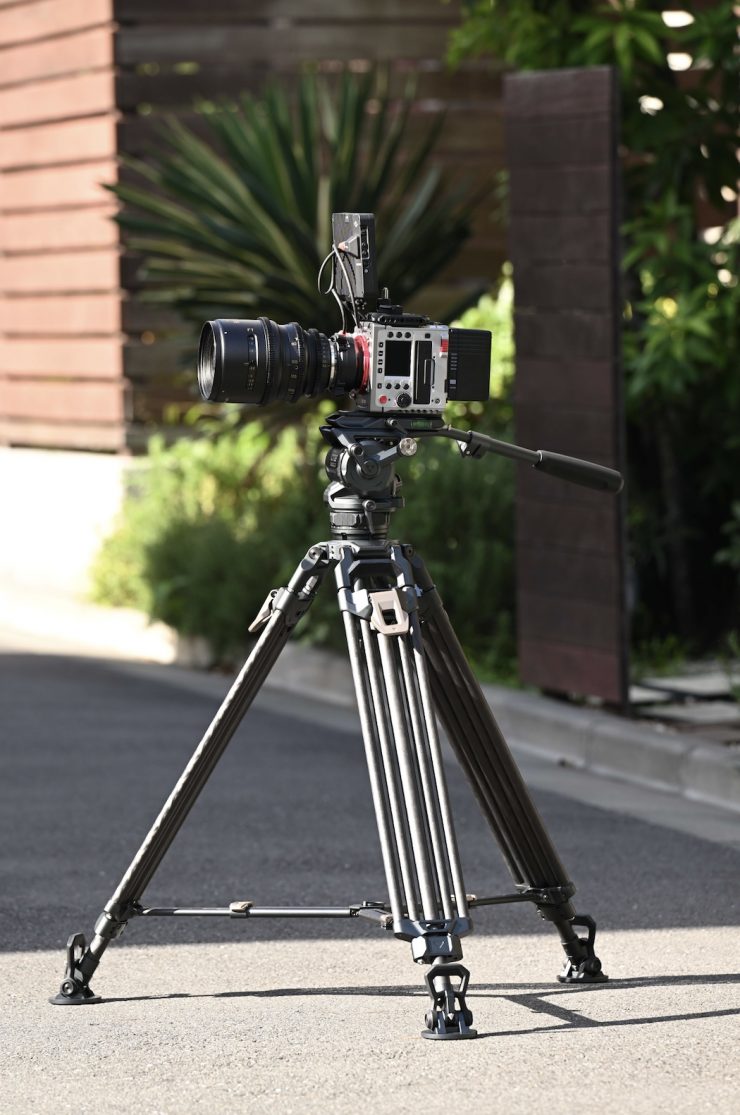
Below you can see how that weight compares to some of the other 75mm fluid head tripod systems on the market.
| WEIGHT | |
| Tilta CT12 75mm Cine Fluid Head With 2-Stage One-Touch Carbon Fiber Tripod System | 7.75 kg / 17.09 lb |
| SmallRig AD-Pro 8 Professional Fluid Head Tripod Kit | 5.6 kg / 12.34 lb |
| Sachtler Ace XL Tripod System with CF Legs & Mid-Level Spreader (75mm Bowl) | 4.1 kg / 9 lb |
| Sachtler Ace M System Black Edition with T ripod & Mid-Level Spreader (75mm Bowl) | 4.39 kg / 9.68 lb |
| Sachtler System FSB 6 MK II Sideload and 75/2 Aluminum Tripod Legs | 5.29 kg / 11.66 lb |
| Sachtler aktiv6 flowtech75 MS Tripod System | 5.5 kg / 12.1 lb |
| Miller CX2 2500 Solo-Q 75 2-Stage Carbon Fiber Tripod System (75mm) | 5.5 kg / 12.1 lb |
| Cartoni Focus 8 Fluid Head with Red Lock Tripod System | 5.81 kg / 12.80 lb |
| Manfrotto 608 Nitrotech Fluid Head & Aluminum Twin Leg Tripod with Mid-Spreader Kit | 5.49 kg / 12.10 lb |
| iFootage Gazelle TC9-Fastbowl Tripod with Komodo K7 Fluid Head Bundle | 4.31 kg / 9.50 lb |
| E-Image EG08A2 2-Stage Aluminum Tripod System with GH08 Fluid Head (75mm) | 5.7 kg / 12.56 lb |
| Benro A673TM Dual-Tube Aluminum Tripod & S8Pro Head | 6.62 kg / 14.6 lb |
| Camgear DV6P Fluid Head & T75/CF2 Carbon Fiber Tripod with Mid-Level Spreader System | 5.38 kg / 11.86 lb |
| Magnus REX VT-6000 2-Stage Video Tripod with Fluid Head | 5.53 kg / 12.2 lb |
| miliboo MTT609B Professional Tripod & Fluid Head with Ground Spreader (Carbon Fiber) | 4.56 kg / 10.05 lb |
| Sirui BCT-2203 Carbon Fiber Tripod & BCH-20 Video Head Bundle | 6.7 kg / 14.77 lb |
Payload capacity
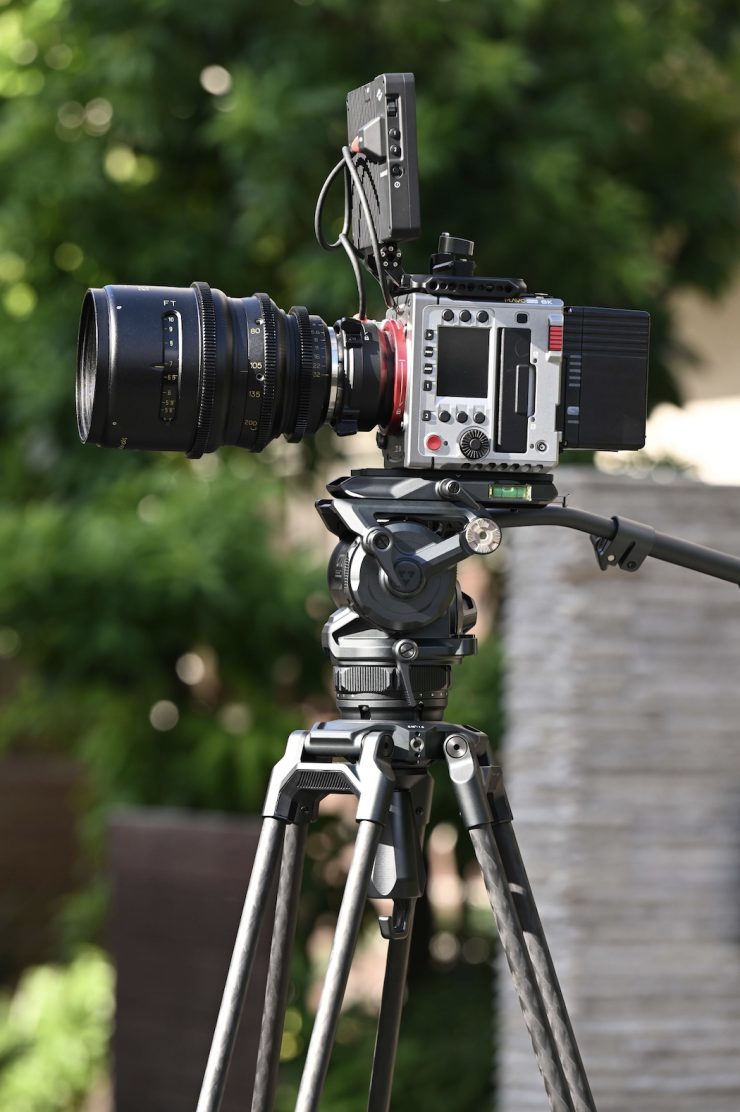
The Tilta CT12 75mm Cine Fluid Head has a maximum payload of 12.02 kg / 26.5 lb. This is actually quite a lot higher than most other 75mm bowl fluid heads that are on the market.
Below you can see how that payload capacity compares to some other 75mm bowl fluid heads.
| PAYLOAD CAPACITY | |
| Tilta CT12 75mm Cine Fluid Head | 12.02 kg / 26.5 lb |
| SmallRig Professional Fluid Head PH8 | 8 kg / 17.63 lb |
| Sachtler Ace XL fluid head | 8 kg / 17.63 lb |
| Sachtler Ace M fluid head | 3.99 kg / 8.8 lb |
| Sachtler FSB 6 MK II Fluid Head | 8 kg / 17.63 lb |
| Sachtler aktiv6 Sideload Fluid Head with SpeedLevel & 3-Step Drag | 8 kg / 17.63 lb |
| Miller CX2 Fluid Head | 8 kg / 17.63 lb |
| Cartoni Focus 8 Fluid Head | 8.16 kg / 18 lb |
| Manfrotto 608 Nitrotech Fluid Head | 14 kg / 30.9 lb |
| iFootage Komodo K7 Fluid Head | 7 kg / 15.43 lb |
| Camgear DV6P | 10 kg / 22.05 lb |
| E-Image GH08 Fluid Head | 8 kg / 17.63 lb |
| Benro S8Pro Head | 8 kg / 17.63 lb |
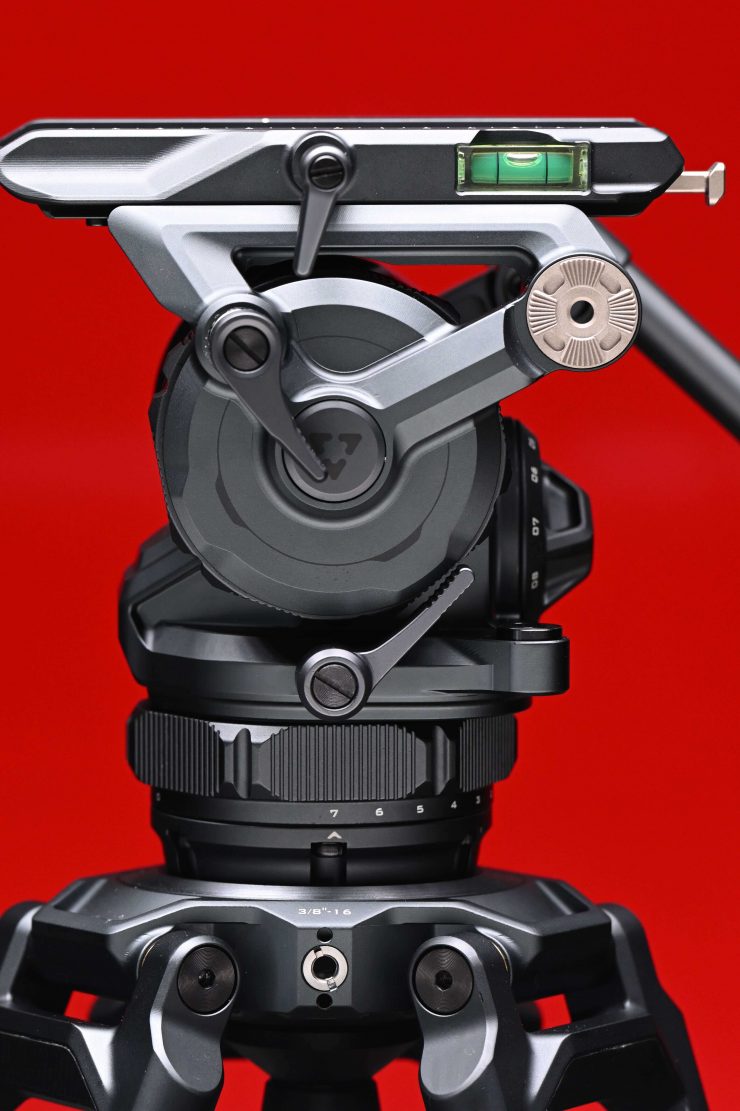
The 8kg payload capacity allows you to use a wide array of options from small to mid-sized digital cinema camera packages, to mirrorless hybrids. You could also potentially use it with larger digital cinema cameras if you weren’t running large cine lenses.
How high & low can it go?
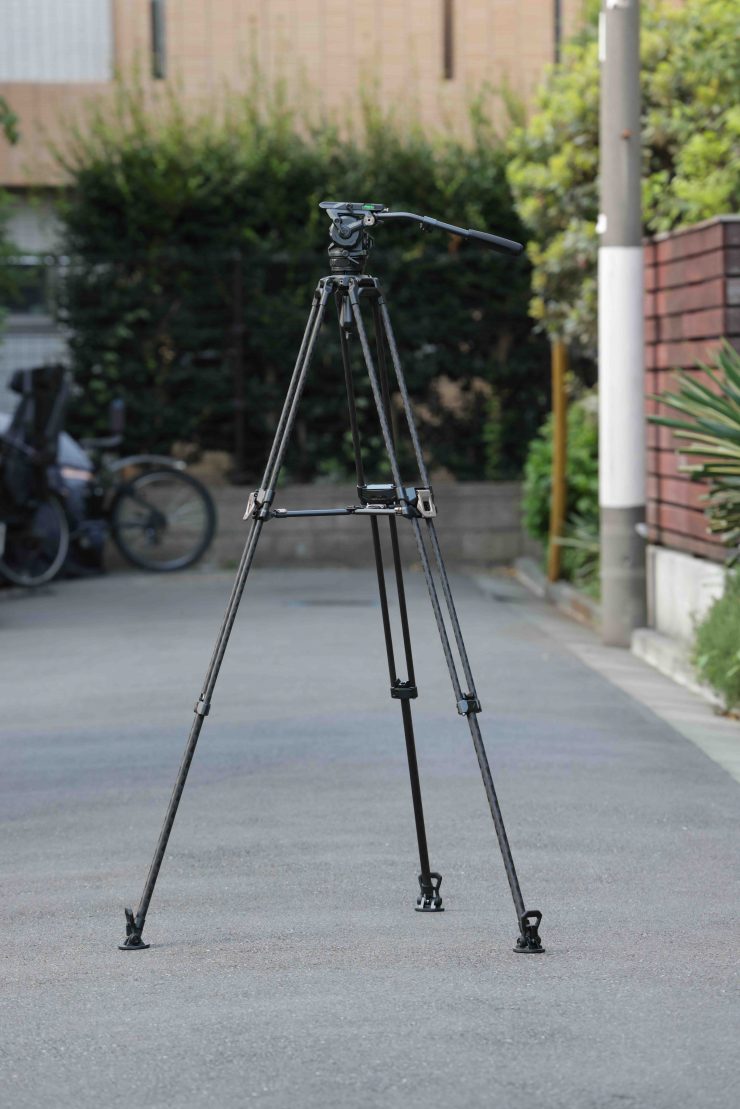
Below you can see the maximum and minimum height of the tripod.
- 5.95′ / 181.36 cm Maximum Height
- 2.8′ / 84.1 cm
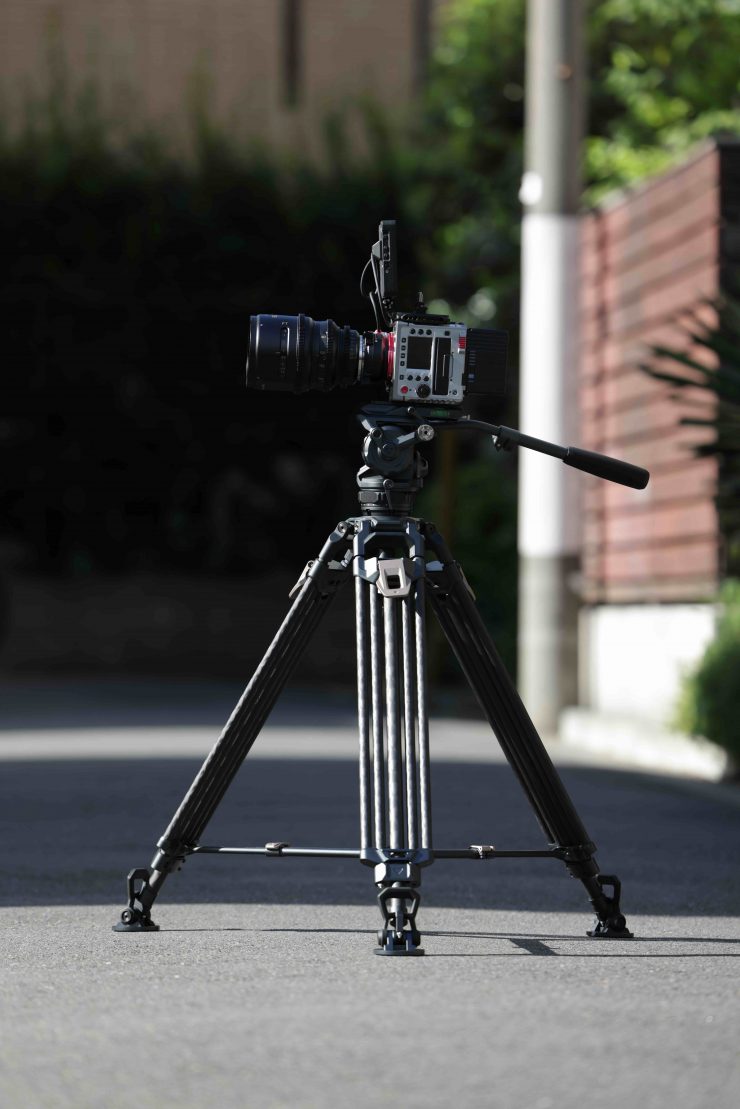
The tripod offers a decent height operating range that will suit most people’s needs.
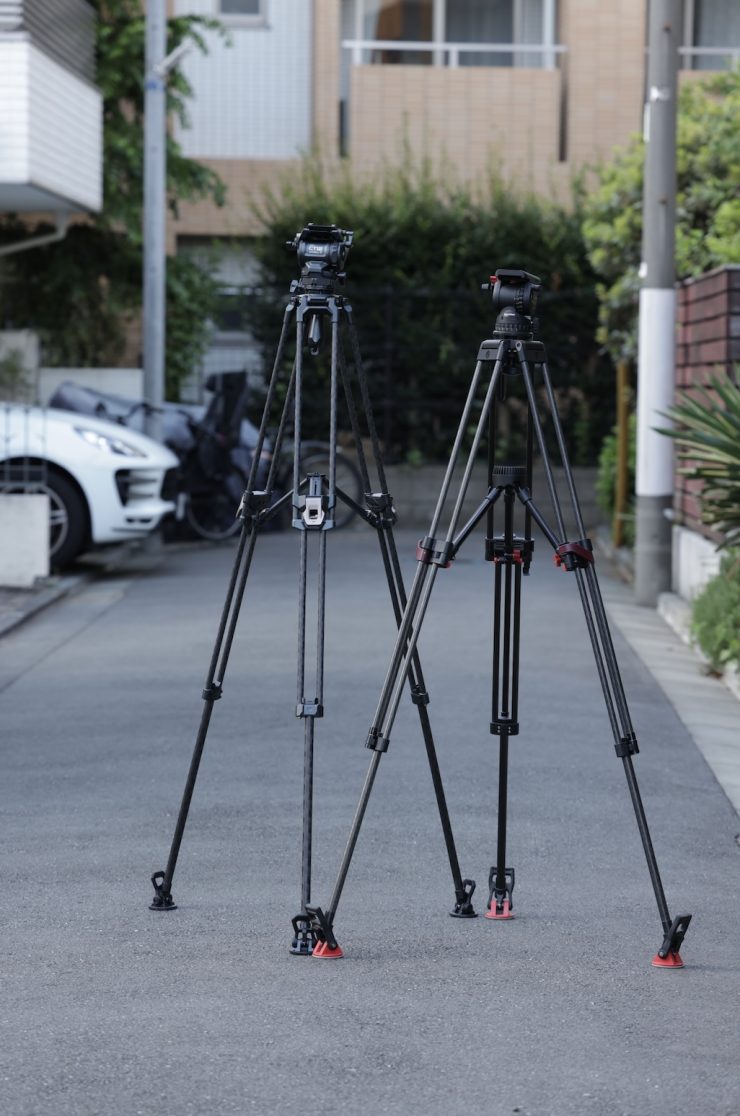
Above you can see that it actually goes slightly higher than a pair of Sachtler legs that I have.
3-Section Carbon Fiber Legs
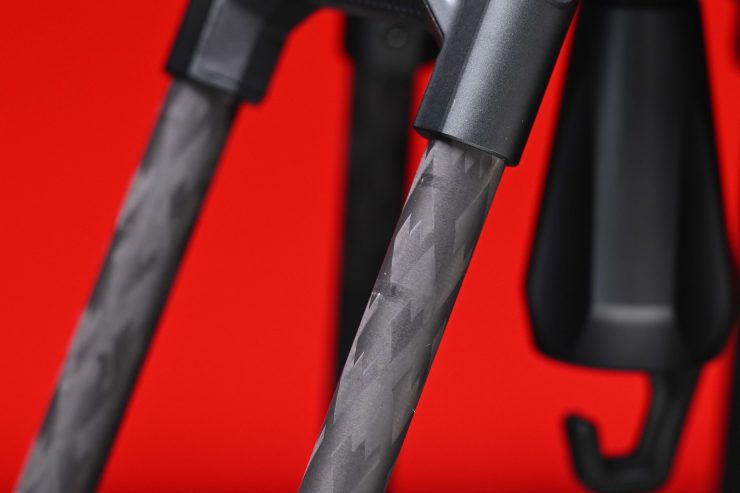
The newly designed carbon fiber legs can bear up to 49.89kg / 110 lb.
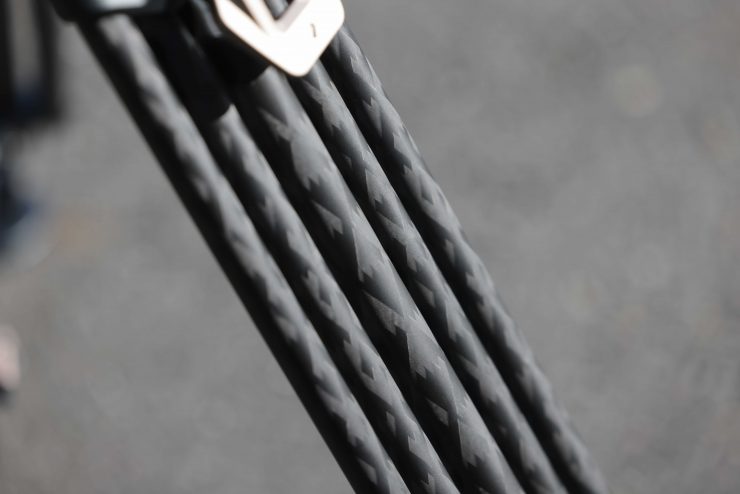
The unique carbon construction process is claimed to enable the tripod to support heavier weights and offer more stability than those constructed with standard carbon fiber processes.
The legs can accommodate both 75mm and 100mm tripod heads via a removable adapter and feature a plate buckle-style locking mid-level spreader for added stability.
Dual Bubble Levels

I like that Tilta has included dual bubble levels on the tripod head.
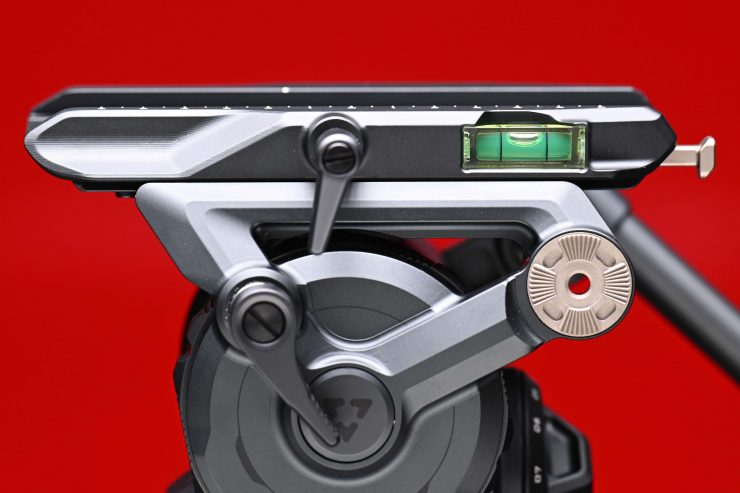
There is one for leveling the bowl and another that allows you to obtain horizontal balance.
There is small button near the bubble level that I thought may activate a light, but nothing happened when I pressed it. According to the specifications, the bubble is supposed to illuminate. Now, I reached out to Tilta and they said that they don’t include a battery with the tripod for the bubble illumination. I did find this a little odd, mainly because there is no included instruction manual or any note mentioning that they don’t include a battery, or what type of battery is required.
If you are wondering the battery is a CR1632 (16mm*3.2mm).
Incremental 10-step counterbalance & 8 levels of pan/tilt drag
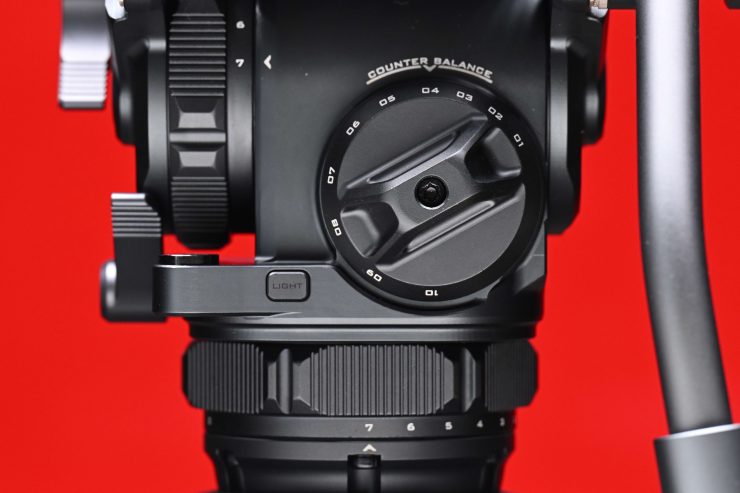
The head provides smooth movements with 10-step dynamic counterbalance, eight levels of pan/tilt drag, +90/-60° tilt, and 360° panning.
The competing SmallRig PH8 Professional Fluid Head uses an adjustable 4-step hydraulic damping system and 6-step Counterbalance system, while the popular Sachtler ACE XL has an 8-Step Counterbalance and 3-Step + 0 Pan/Tilt Drag.
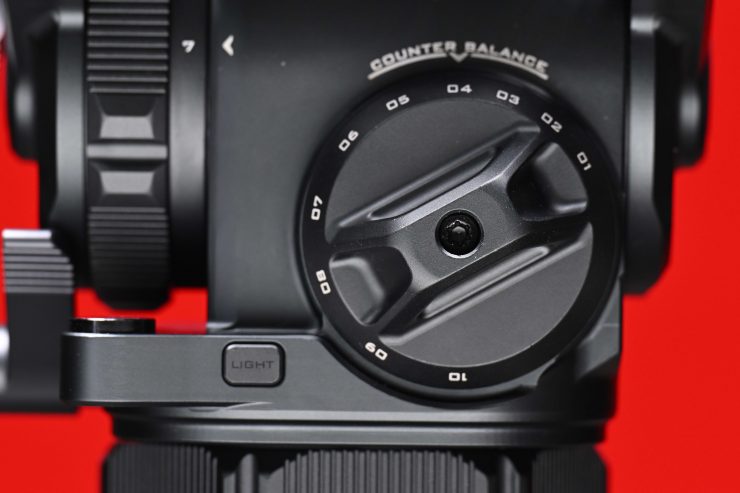
The counterbalance and dampening system controls are tactile and easy to use.
Manfrotto-Type Quick Release
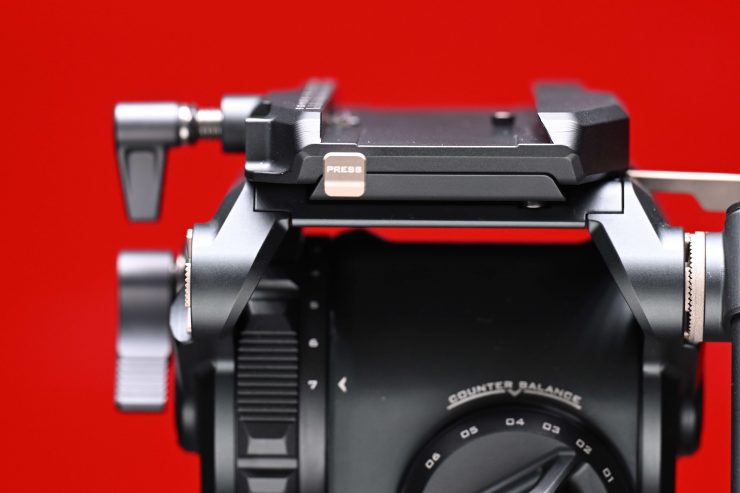
The drop-in Manfrotto receiver enables quick mounting and offers an easy way to balance the camera’s center of gravity without using a dovetail plate. However, it does still offer the flexibility to be replaced by an extended Tilta Dovetail Plate (Coming Soon). It will also work with the 8″ Tilta Standard Dovetail Tripod Adapter Plate and the 8″ Arri Dovetail Adapter Plate for Tilta Cine Tripod.
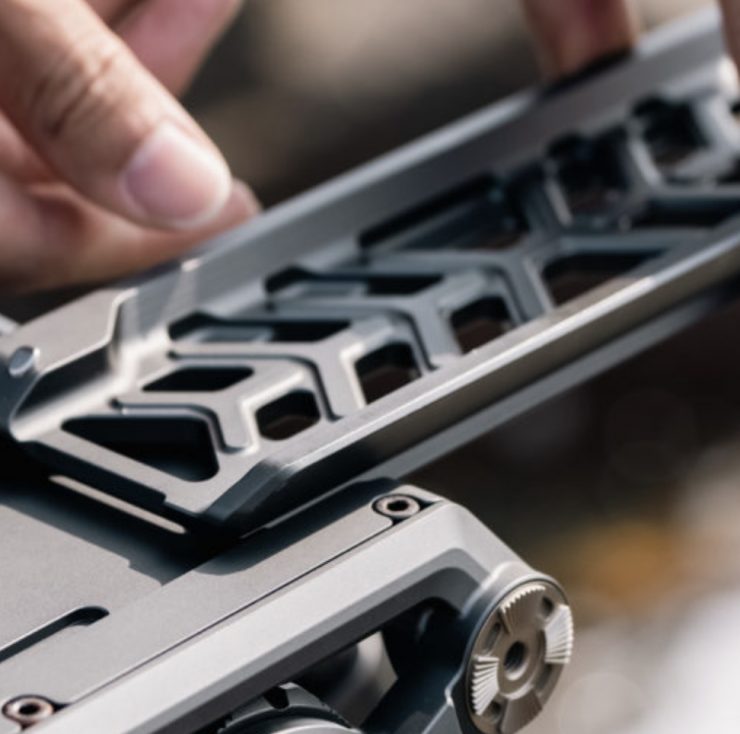
I like that Tilta will be offering a dovetail plate option for this tripod as it provides greater compatibility for equipment that requires wide-range position adjustments.
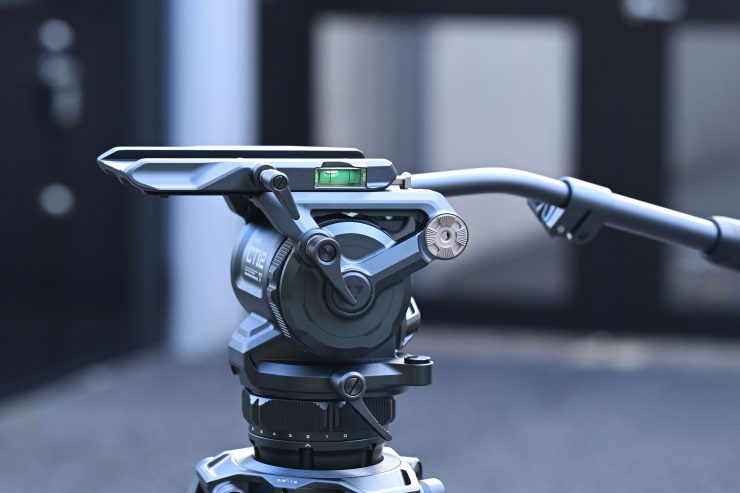
The tripod also allows you to adjust the top plate to obtain better balance when running front or back heavy camera packages. There is a reasonably large range of adjustment.
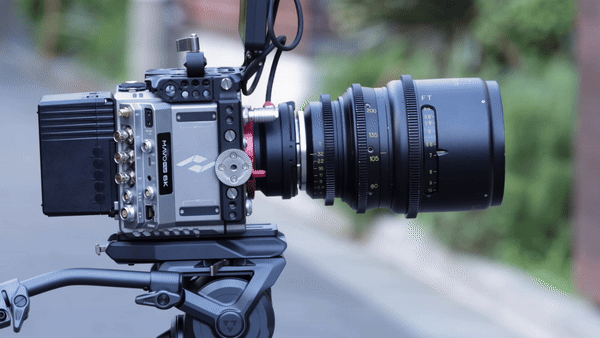
Above you can see how that works.
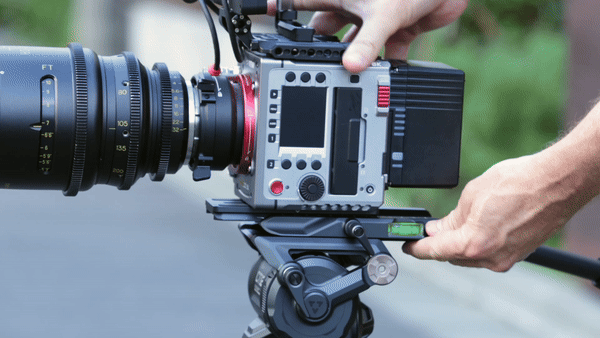
You can also adjust the camera plate to further obtain better balance. There is a locking pin so that you can’t move the plate past certain points. Above you can see how that works.
Detachable Handle
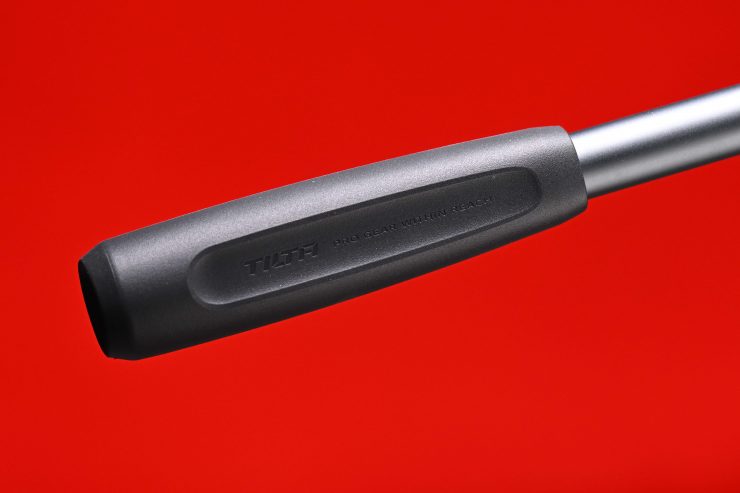
The textured silicone pan handle can be easily swapped to both the left or right side of the tripod.
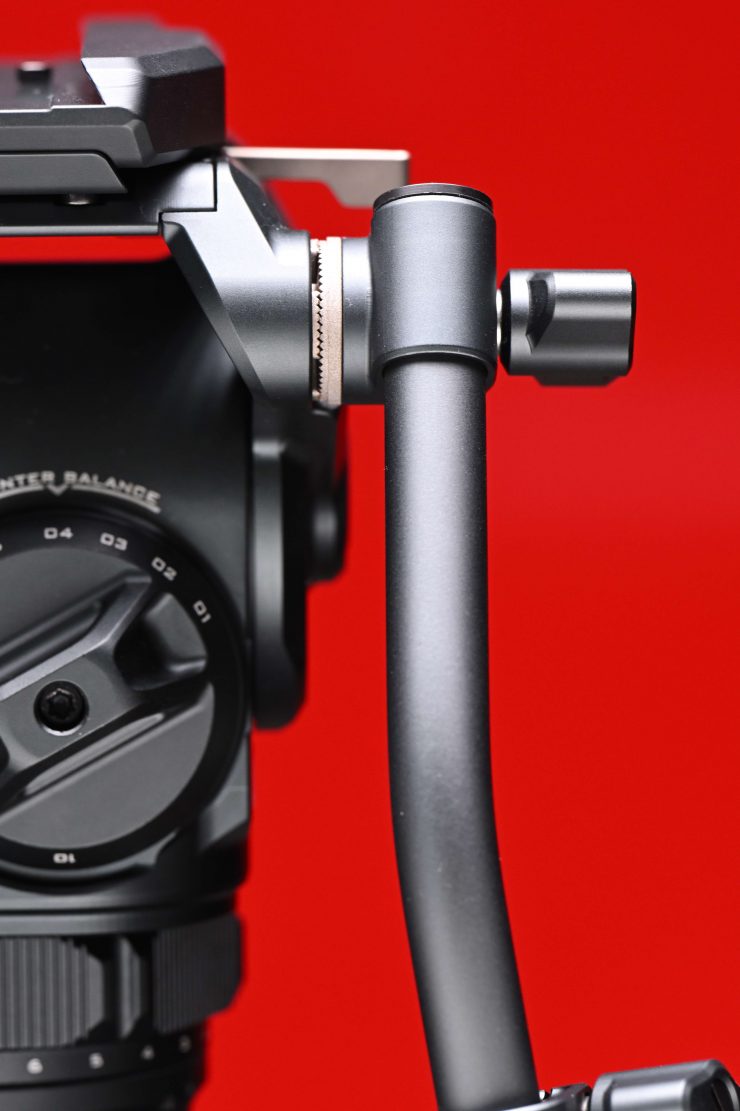
The handle can be extended out quite a long way which is handy.
3/8″-16 Anti-Rotation Threads
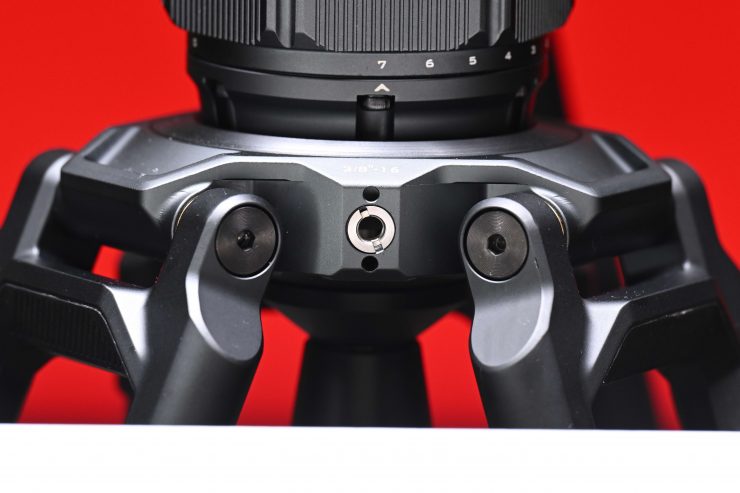
On the top of the tripod legs near the bowl, there are 3/8″ threads that also come with 1/4″-20 adaptors. This allows you to attach monitors or other accessories if need be.
Spreaders
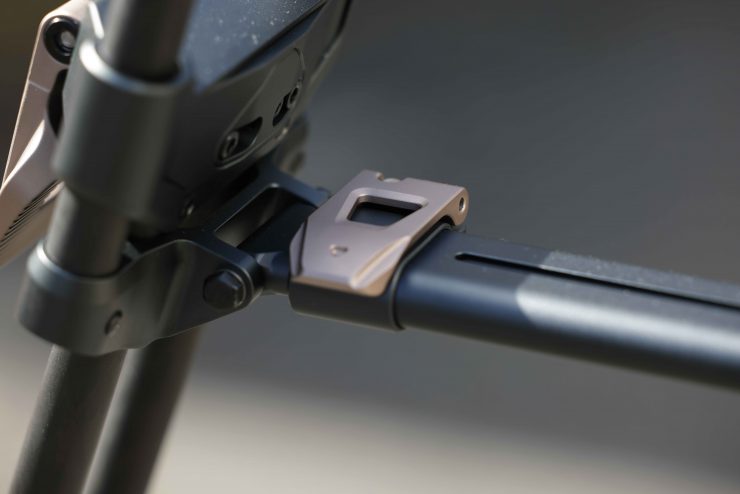
The tripod kit comes with mid-spreaders, but you can’t remove them unless you use a tool.
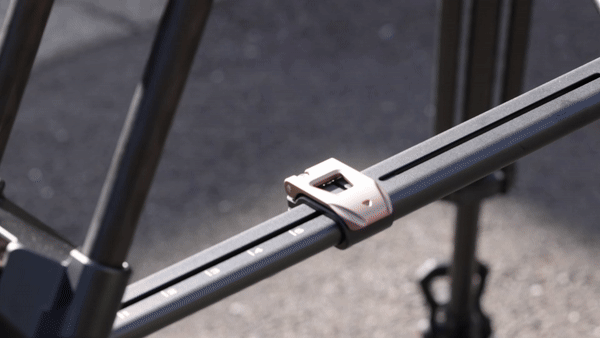
These are very easy to adjust and you can simply use a quick-release mechanism to lengthen them. Tilta has also put markings on them which is a nice touch as it allows you to set them up evenly.
The spreaders adjust out a reasonable amount to create a nice solid platform. With the mid-spreaders all the way out you can get a maximum height of 71.7″ / 182 cm. If you want to go even higher you could bring the spreaders in or take them off completely (although I wouldn’t recommend doing this).
Operation
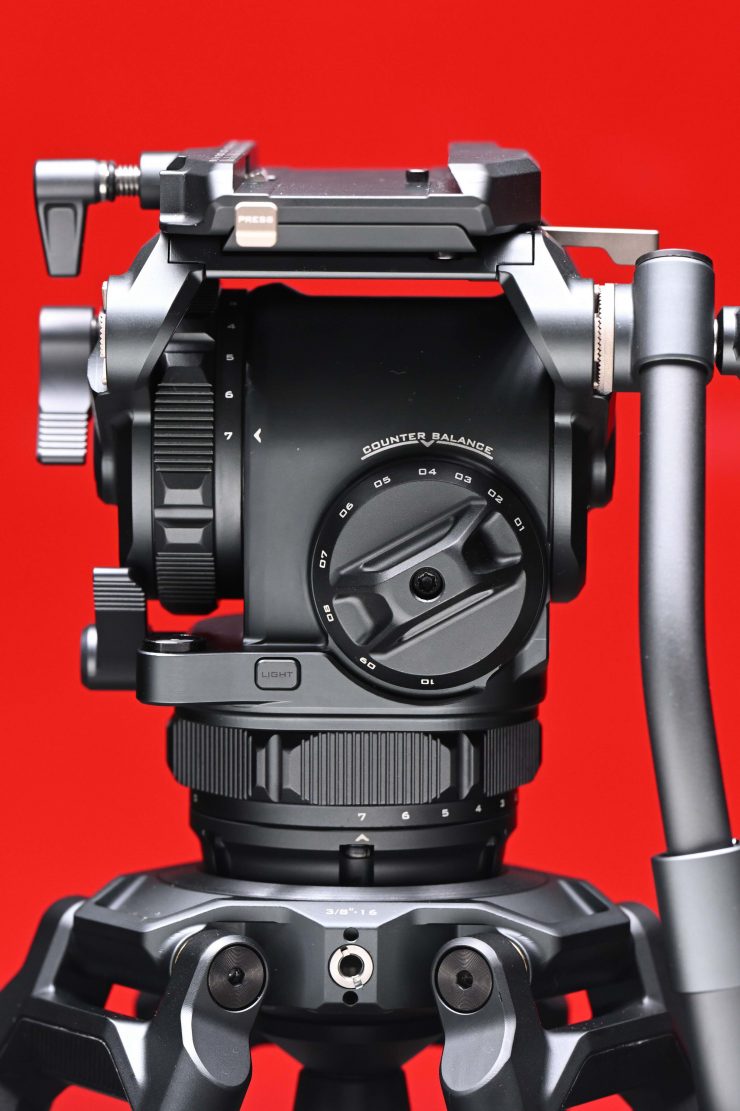
A tripod can have decent enough build quality and good features, but if it doesn’t actually perform well then none of that really matters. I have personally found that most affordable 75mm bowl fluid heads leave a lot to be desired, so I was interested to see how the Tilta CT12 performed.
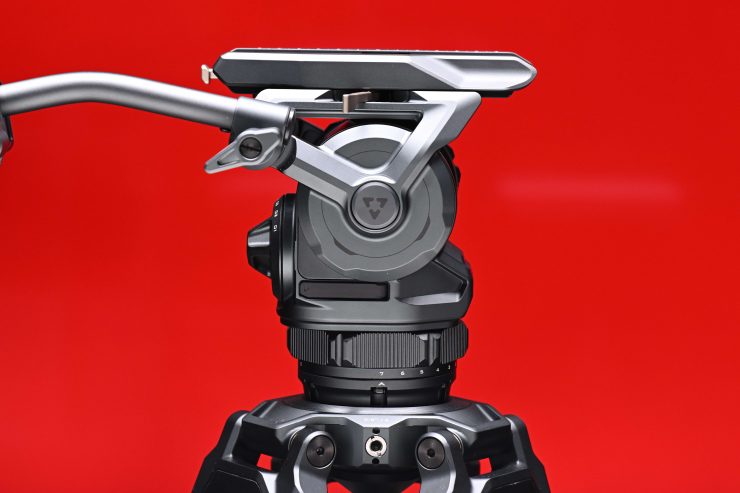
The overall operation of the tripod is good considering its price point.
How is it to use with a Digital Cinema Camera?
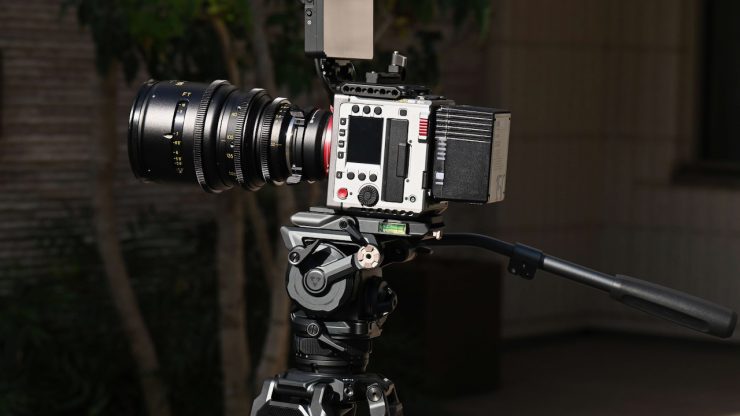
I tried the tripod out with a Kinefinity MAVO EDGE 6K, a TLS Morpheous 80-200mm T2.8, and a bebob V150 micro V-mount battery to see how well it performed. This combination weighed 5.9kg / 13 lb. This was 6.1kg below the maximum payload capacity. At least in my opinion, you never want to run a fluid head at close to or at its maximum payload capacity.
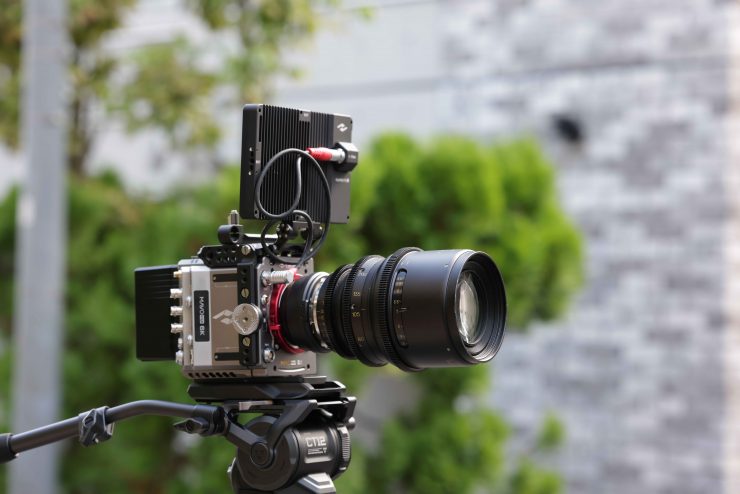
I purposely chose a very front-heavy combination for these tests.
With a decent fluid head, you need to be able to pan and tilt smoothly and you want as little backlash as possible. Backlash can occur if you have the drag settings too high. If you are not familiar with backlash it is like a bouncy movement that the head will do when tilting.
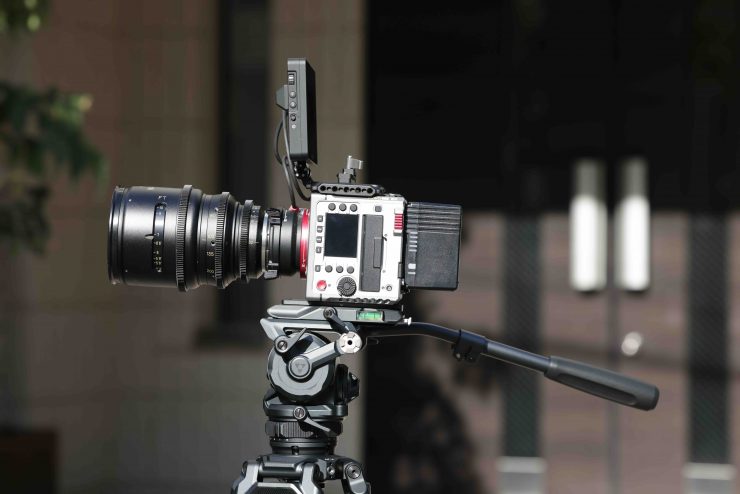
The nice thing about having a tripod head with a good payload capacity is that you can run a lot of camera rigs without having to reach the max. weight limit.
Counterbalance & Tilt Drag

I did find that the Tilta CT12 had more resistance on the pan-axis than it did on the tilt-axis. On a really good fluid head tripod, you should be able to dial in the same amount of maximum resistance on both axes. Now, I don’t necessarily think this is a massive deal, but it was something I did feel was worth mentioning.
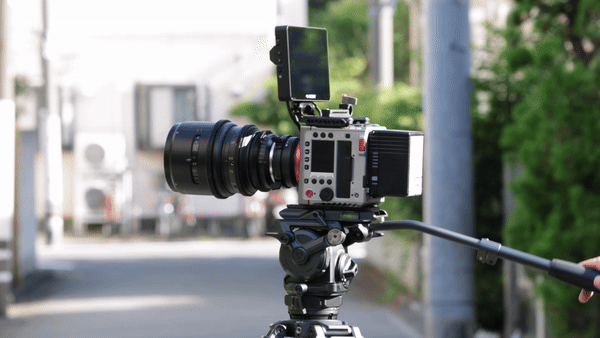
I found that for the camera and lens combination that I was running, setting the counterbalance of 3-4 provided the best results. At the start of the video I have the counterbalance set to 10 and you can see how much backlash there is.
As the fluid head has a decent amount of counterbalance, dampening, and tension adjustments you can adjust it depending on your camera payload.
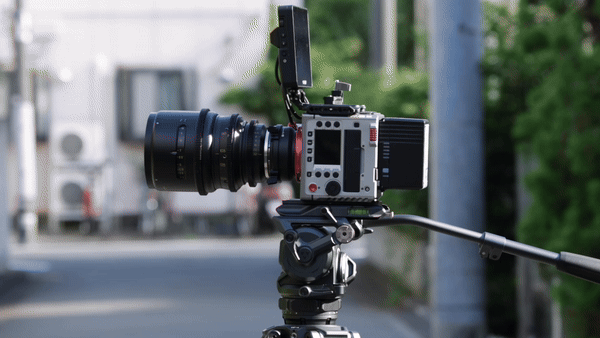
Above you can see how it pans.
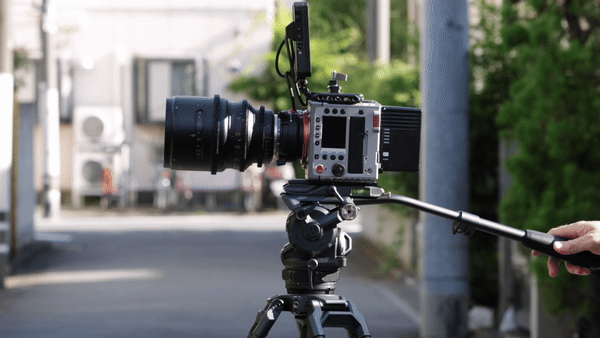
Above you can see how it tilts.
What about panning and tilting at the same time?
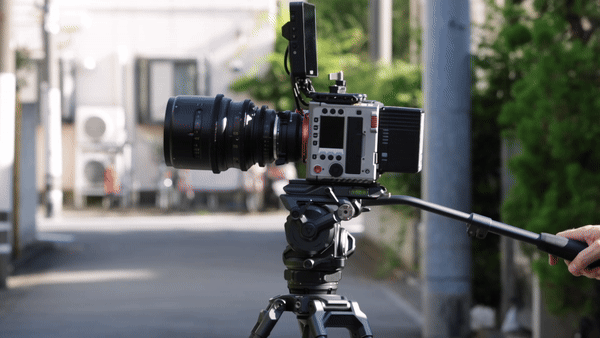
Panning and tilting at the same time can be done smoothly once you have everything adjusted correctly.
Usually, with more affordable fluid heads, I would personally recommend that you hold the pan handle and the front of the camera at the same time if you are panning and tilting, however, you don’t have to do that with the Tilta.
Side plate lock-in
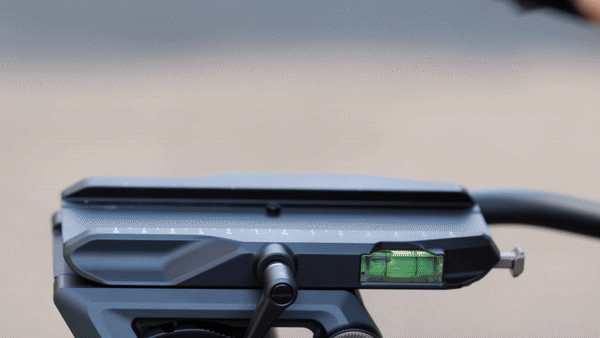
It is very easy to attach your camera package to the tripod head. You simply loosen the locking mechanism and then drop your camera in, with the baseplate attached. Then all you need to do is tighten up the locking mechanism.
To remove the camera you loosen the tightening mechanism and then press in the release mechanism and then slide the plate out.
How is the stability?
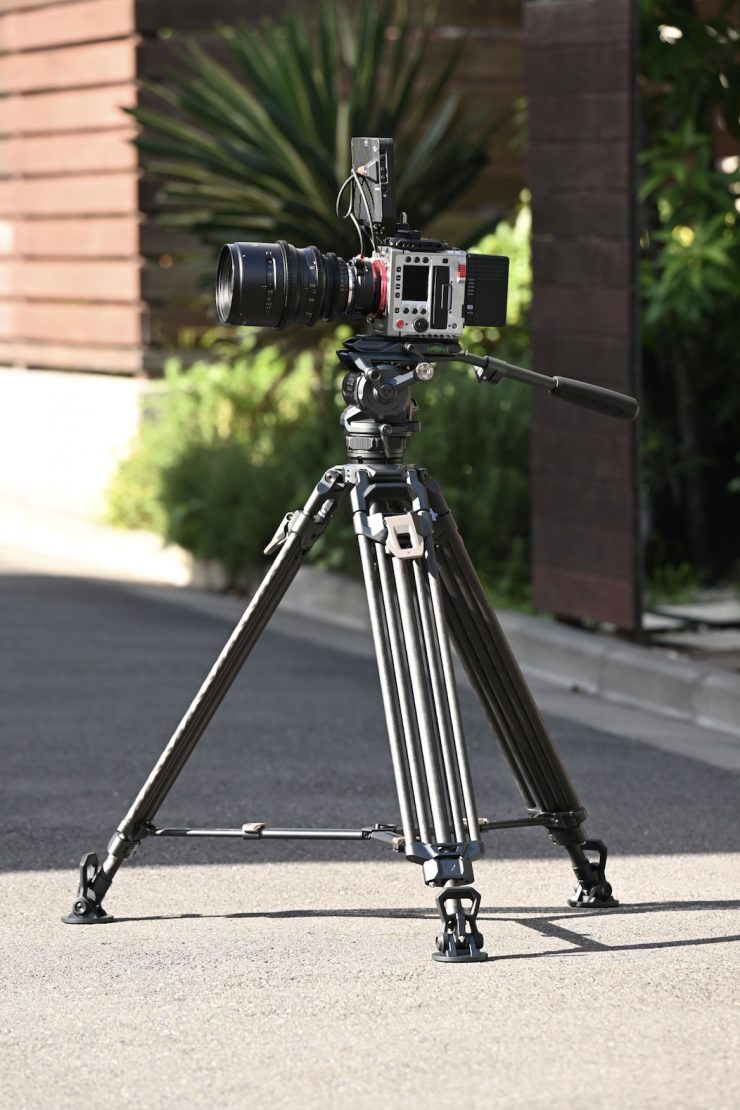
At its minimum height, the tripod is solid and it doesn’t move around or flex.
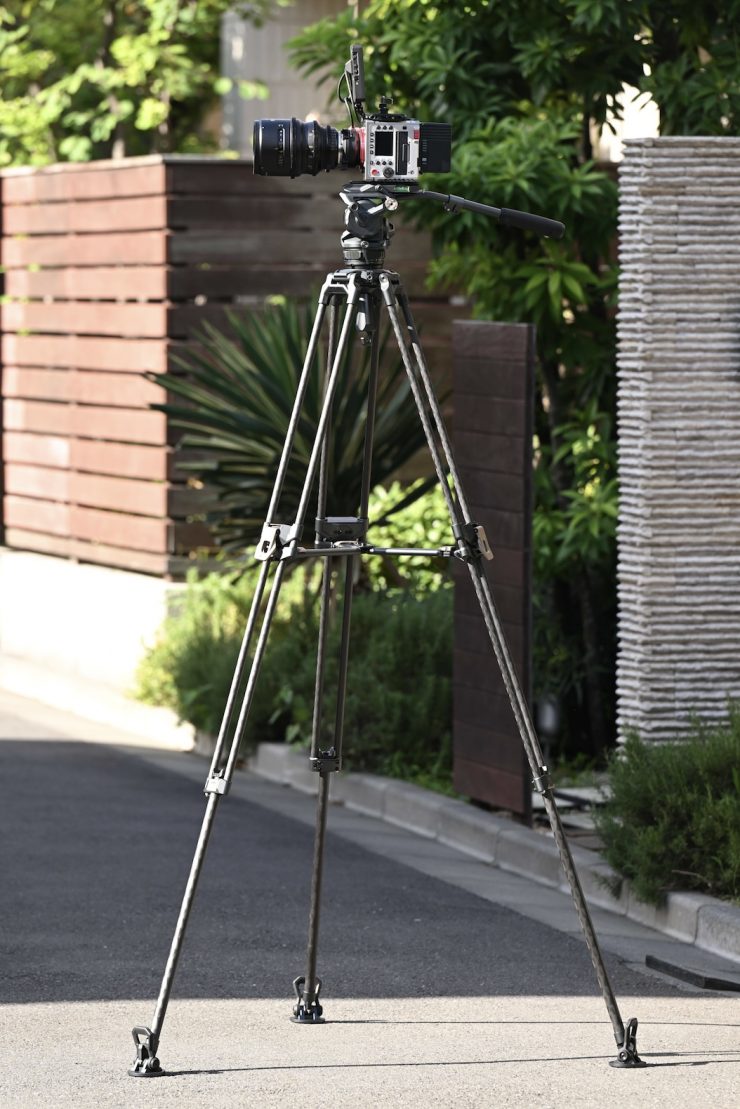
Even at its maximum operating height (with the mid-spreaders not extended) the stability was good. This somewhat surprised me, because with a lot of the ‘affordable’ tripod systems I have tried stability when fully raised tends to be an issue.
What are the feet like?
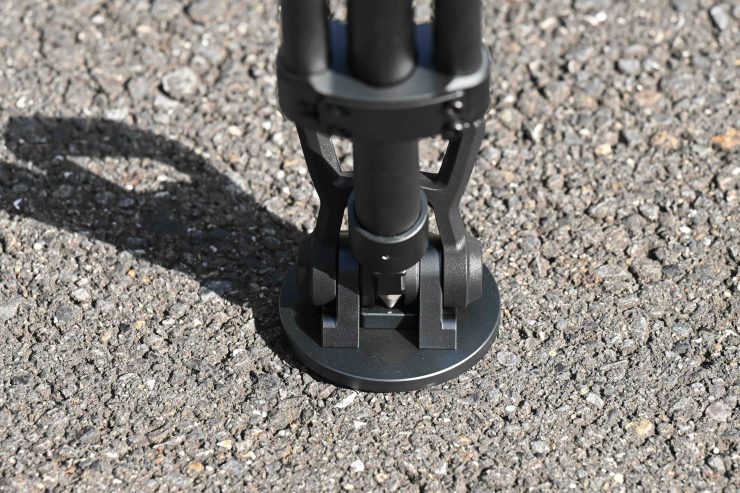
The feet have a large uniform footprint so they sit evenly on flat surfaces.
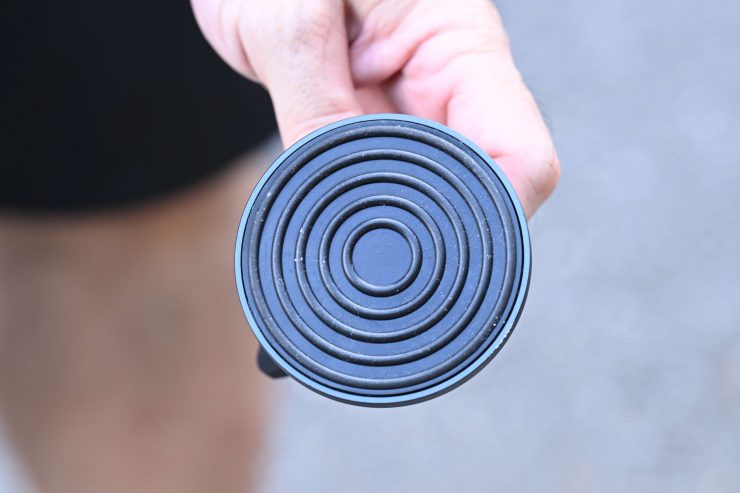
The feet are made out of a hard rubber material.
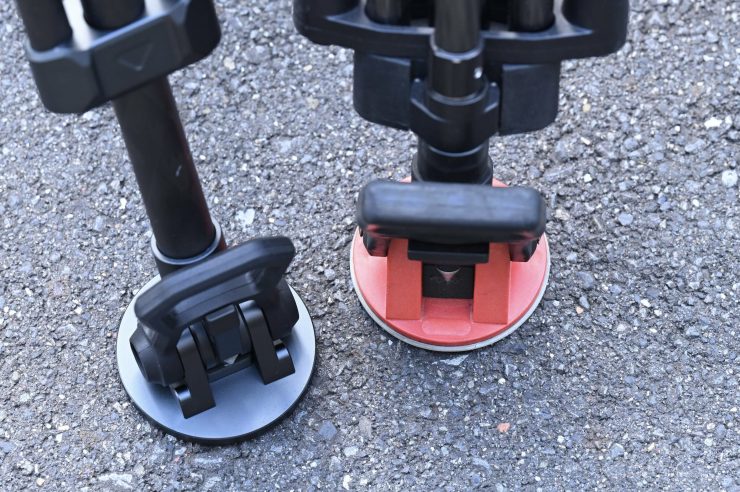
Above you can see how they compare to some Sachtler feet.
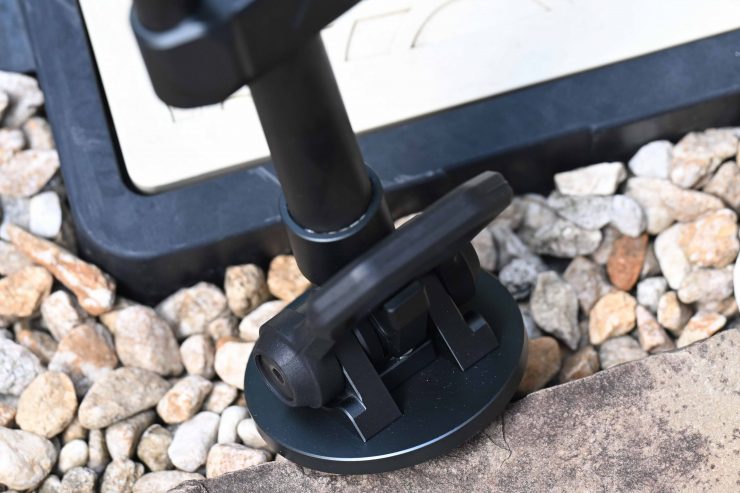
On more uneven surfaces they still work pretty well, but it really depends on the surface.
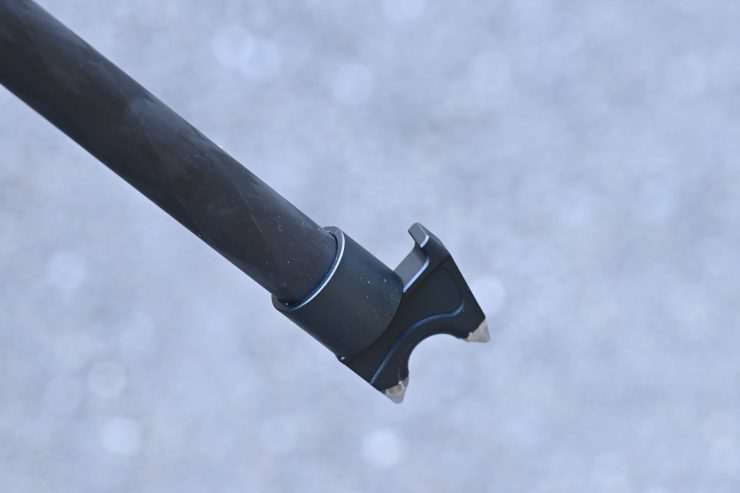
You can also remove the feet if you need to use the tripod on much more uneven surfaces or when you are putting it on a dolly, etc.
How easy is it to carry or move
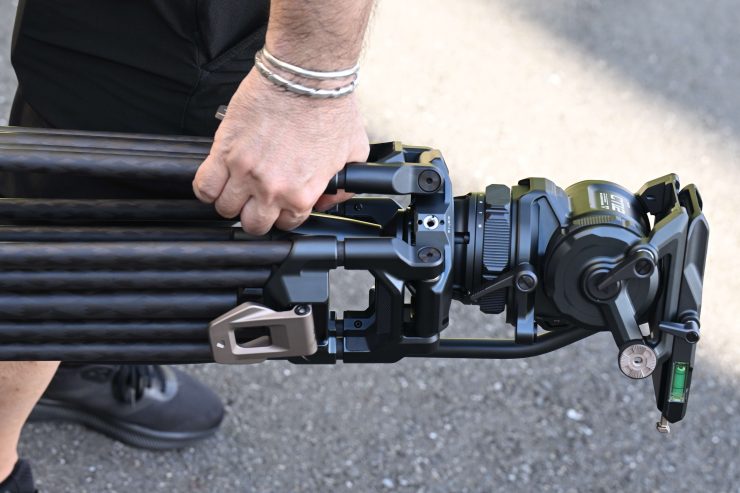
One of the most overlooked aspects of a tripod is how easy is it to pitch up and carry or move.
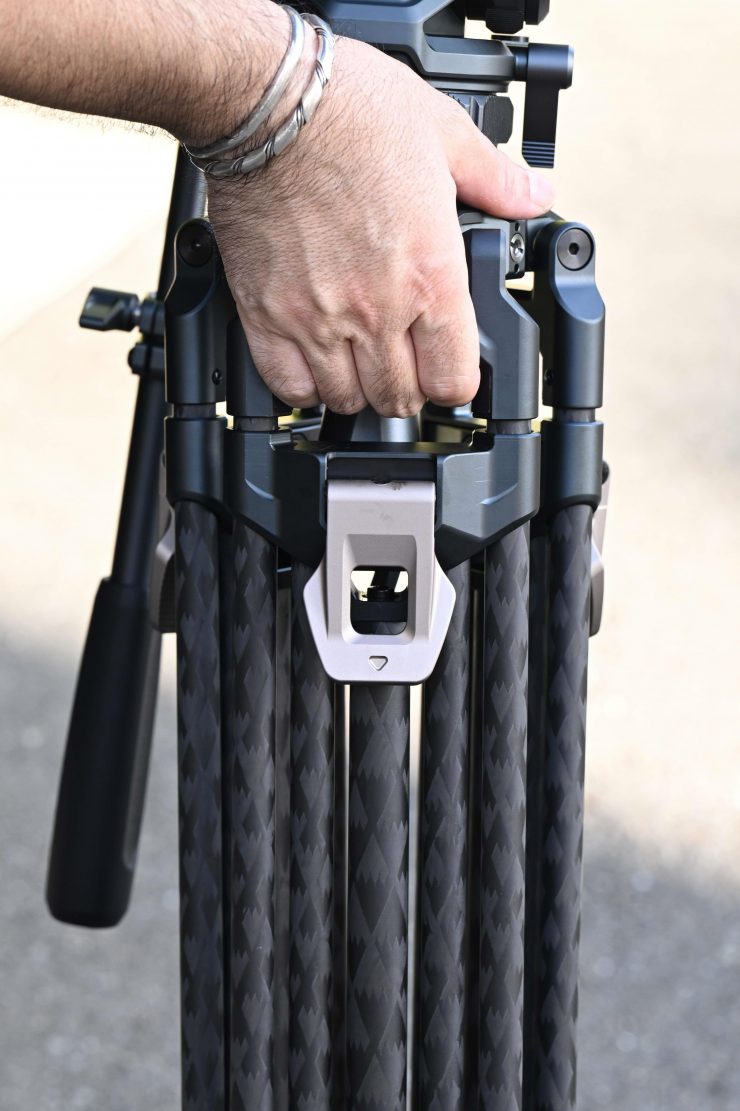
On the CT12, Tilta has placed some hard rubber material on the top of the tripod legs that makes it easier to grab and pick up.
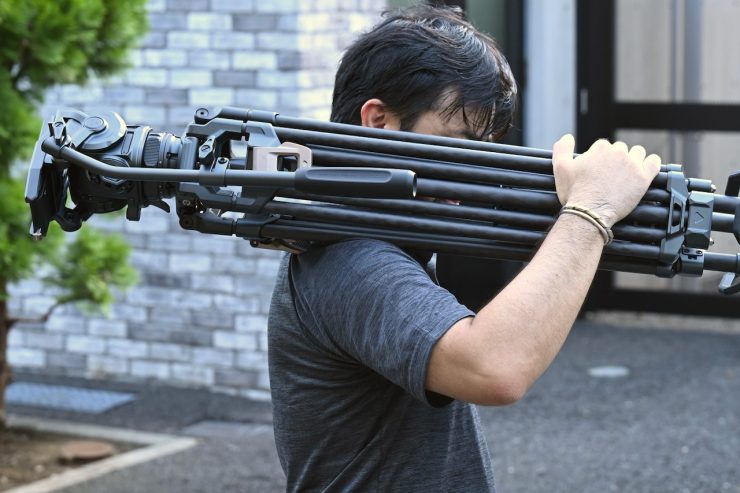
You can carry the tripod on your shoulder, but like a lot of tripods, it isn’t overly comfortable to do.
Price & Availability
The Tilta CT12 75mm Cine Fluid Head With 2-Stage One-Touch Carbon Fiber Tripod System retails for $1,199 USD.
Below you can see how that price compares to some of the other 75mm fluid head tripod systems on the market.
The price of $1,199 USD makes it more expensive than the competing SmallRig AD-Pro 8 Professional Fluid Head Tripod Kit and a little bit more affordable than the Cartoni Focus 8 Fluid Head with Red Lock Tripod System which is arguably its closest competition.
Specifications
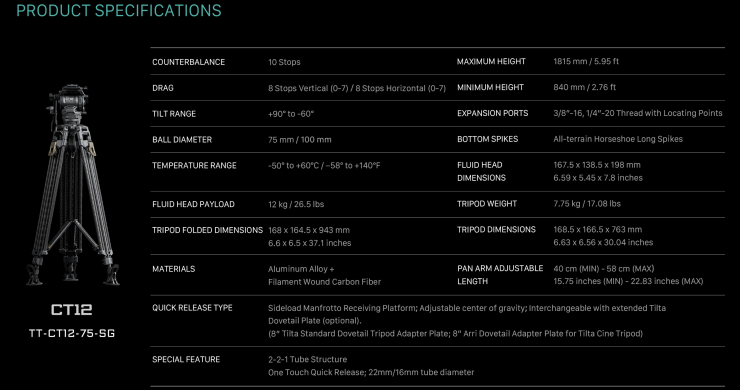
Conclusion
The Tilta CT12 75mm Cine Fluid Head With 2-Stage One-Touch Carbon Fiber Tripod System is a solid solution if you are looking for a reasonably robust and affordable 75mm bowl tripod with a high payload capacity.
If you are using a small to mid-sized digital cinema camera like a Sony FX6, RED KOMODO, Canon C70, etc. then it will work pretty well. Because of the 12.02 kg / 26.5 lb payload capacity you could also use it with larger digital cinema cameras which does somewhat give it a bit of an advantage over some of the competitors.
The biggest caveat with its tripod system is that it is heavier than other competing options and for people using smaller-sized digital cinema cameras that could be a deal breaker.
You can achieve good results with a small to mid-sized digital cinema camera package, or a mirrorless hybrid.
The Tilta CT12 is reasonably well made and it offers decent value for money. Having a large counterbalance range and high payload capacity does set it apart from other competing products. No, it isn’t going to be as good as a more expensive 75mm bowl head tripod system from companies such as Sachtler, Miller, Cartoni, etc, but you shouldn’t expect it to be.
As I said earlier, you often pay for what you get when it comes to tripods, and while the Tilta CT12 isn’t perfect, it is a good option if you are looking for a decent-performing 75mm bowl tripod system. At least in my opinion, I found it to be a better option than the competing SmallRig, but it is also heavier and $400 USD more.

